ART HISTORY: flashcards for exam 1
1/102
Earn XP
Description and Tags
Early Italian Renaissance Art, Venetian Renaissance Art, 15th Century Northern Europe Art, Early Mannerism Art; (~1200s-1500s)
Name | Mastery | Learn | Test | Matching | Spaced |
|---|
No study sessions yet.
103 Terms
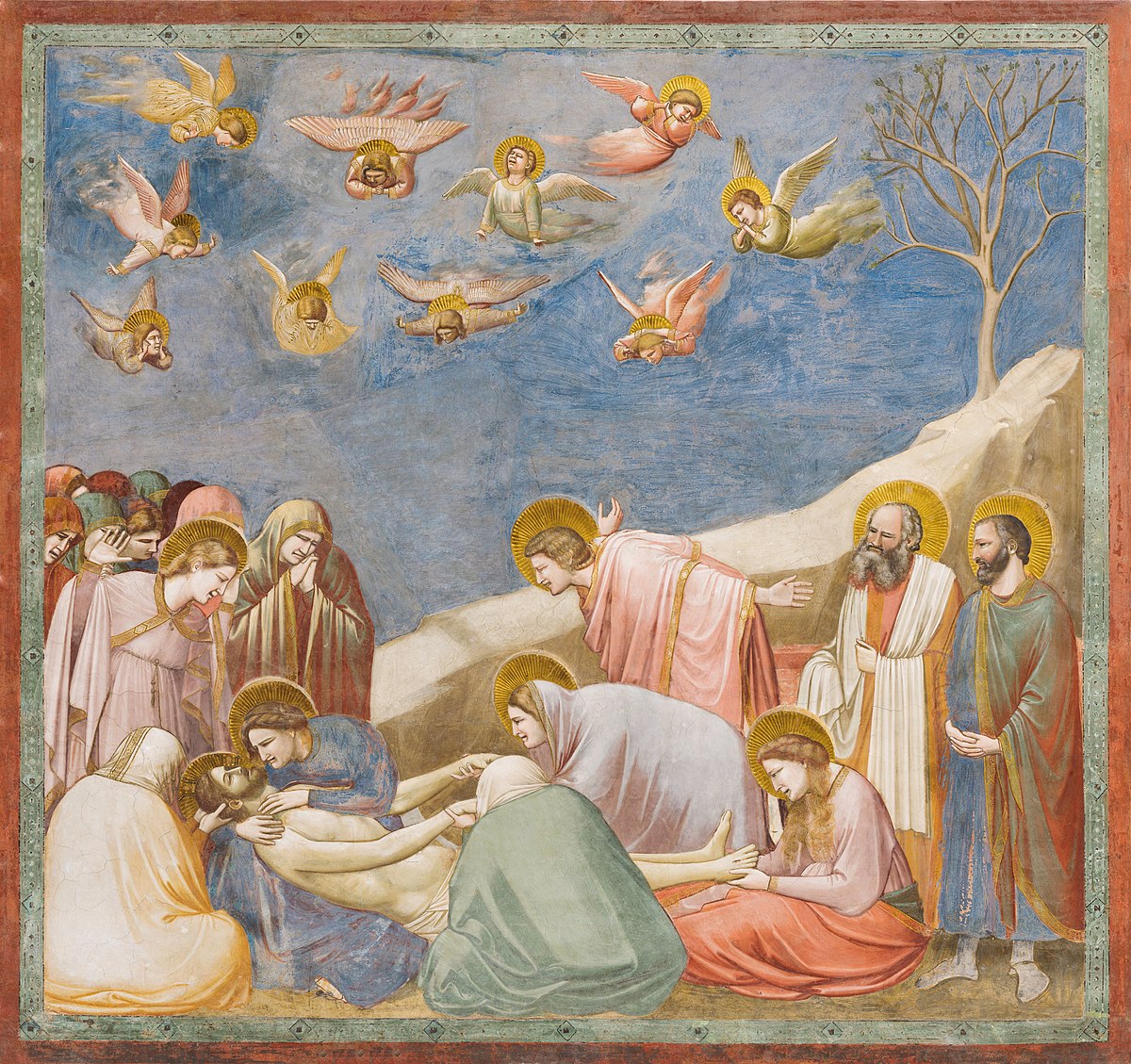
Fresco at Enrico Scrovegni Arena Chapel
Giotto’s Lamentation; foreshortening (difficultà); sense of monumentality; chiaroscuro modelling
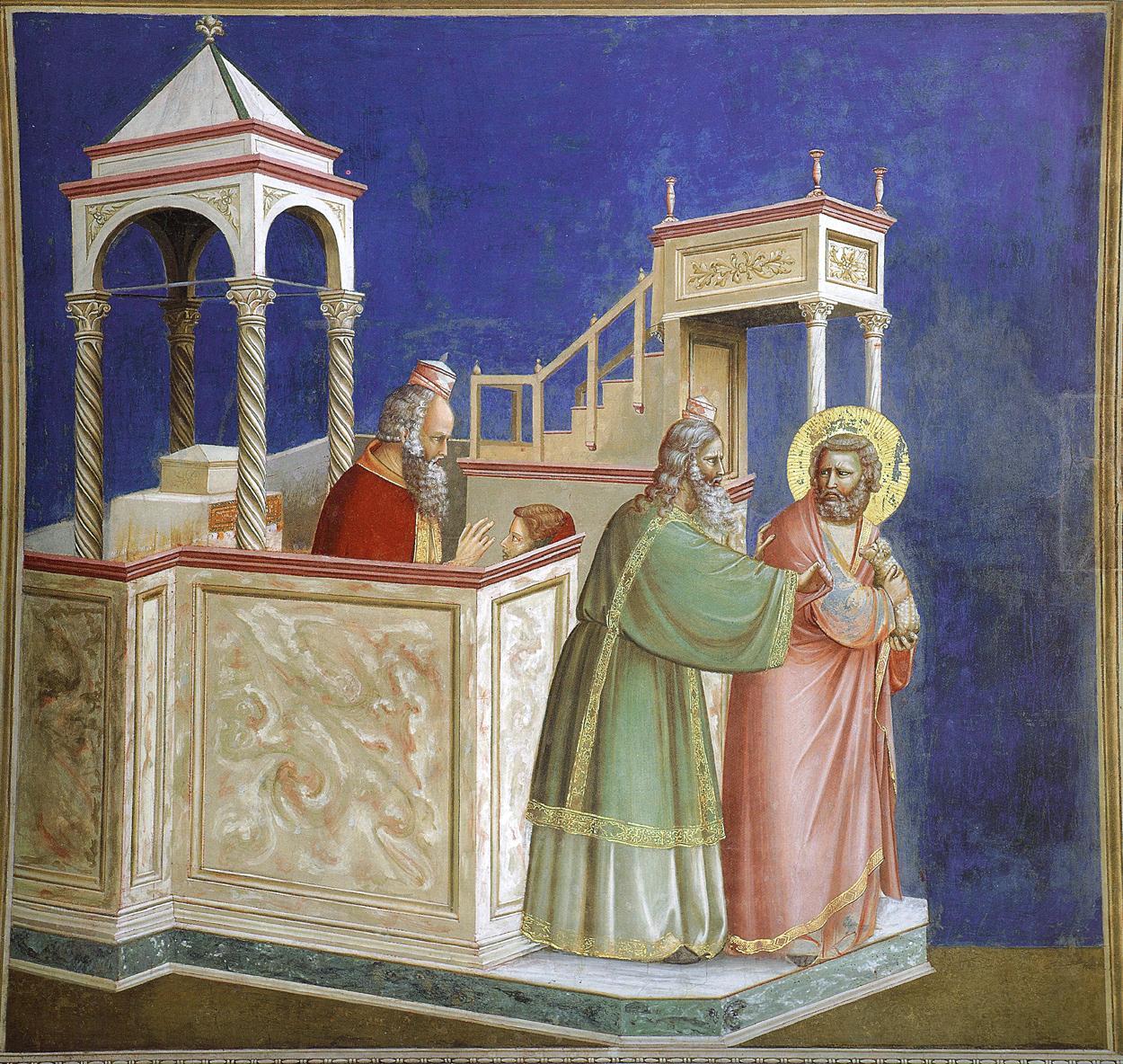
Fresco at Enrico Scrovegni Arena Chapel
Giotto’s Expulsion of Joachim from Temple; sense of monumentality; chiaroscuro modelling
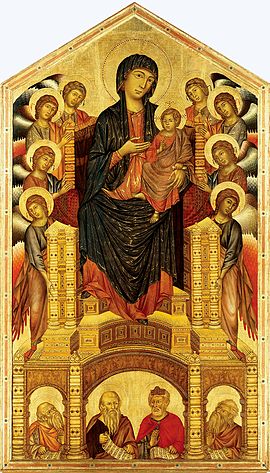
Altarpiece in Uffizi Gallery, Florence
Giovanni Cimabue’s Madonna Enthroned with Angels and Prophets; references Byzantine style; use of chrysography
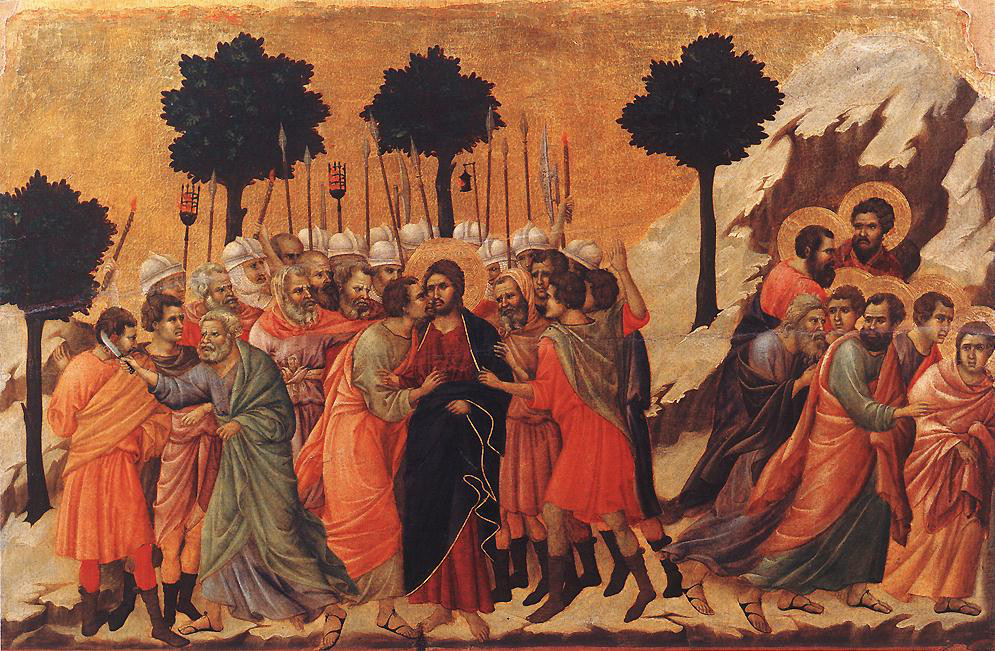
Back of Maestà’s Altarpiece in Siena Cathedral
Duccio’s Betrayal of Jesus Christ
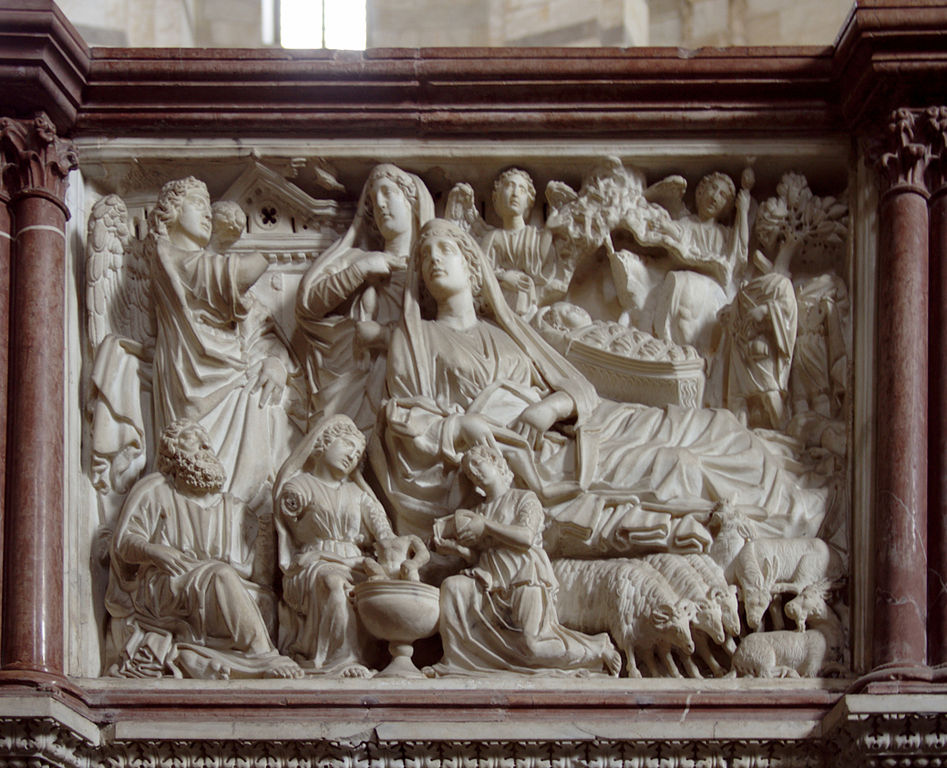
Relief Marble Sculpture, Pisa Pulpit, by father
Nicola Pisano’s Nativity; references Roman Antiquity
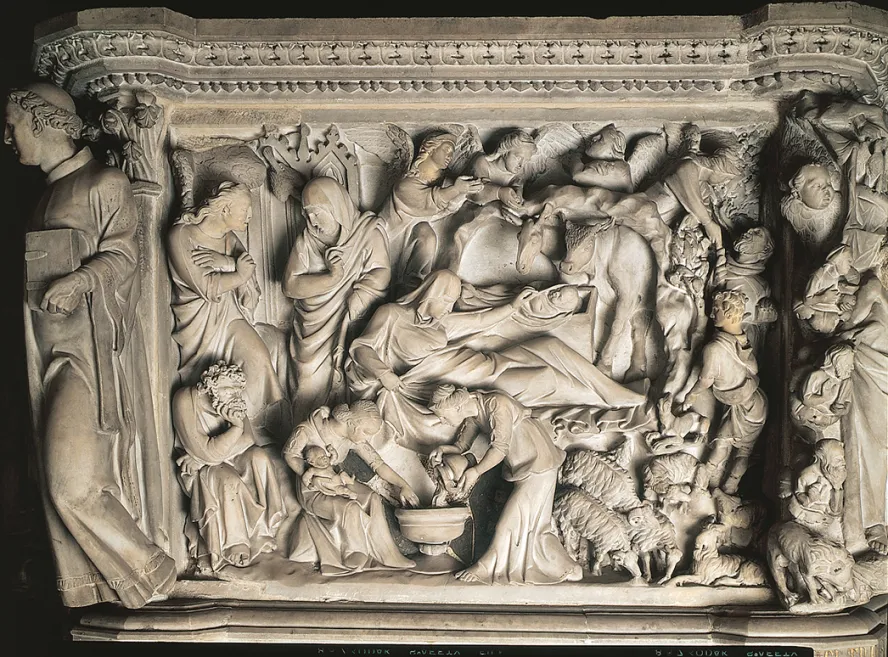
Relief Marble Sculpture, Pisa Pulpit, by son
Giovanni Pisano’s Nativity; references Byzantine style
Difficultà
Difficult poses in painting such as foreshortening
Chrysography
Applying golden leaves to the painting and then scratching it off the surfaces where it is not needed
Chiaroscuro
Contrast between light and shadow
Antithesis
People or objects in art that oppose each other in terms of poses, gestures, facial expressions, etc…
Classical Style
Refers to style of sculpture and architecture from the antiquity (ancient Greece and Rome)
Humanism
In art, places the human at the center of creation rather than a deity; lead to more realistic paintings in terms of human anatomy
Fresco
Mural painting technique (typically in churches) that involves applying wet plaster on a wall and painting on it using water-based paint before the plaster dries out so the paint becomes part of the plaster/wall
Egg Tempera
Fast-dry paint that is made out of water-soluble medium and egg yolk; used to paint on wooden panels covered in gesso (glue+gypsum mix); typically used to paint altarpieces during the Early Renaissance; working across the surface
Sculpture: additive vs. reductive
Additive sculpture models in clay or wax; reductive sculpture is carved out (more impressive than additive), typically out of marble
Sculpture: freestanding vs. relief
Freestanding sculpture is not very stable, often requires a “tree stump” to stabilize the sculpture of a human figure's center of gravity; relief is carved into the block of marble that still retains a flat surface behind the carved out side
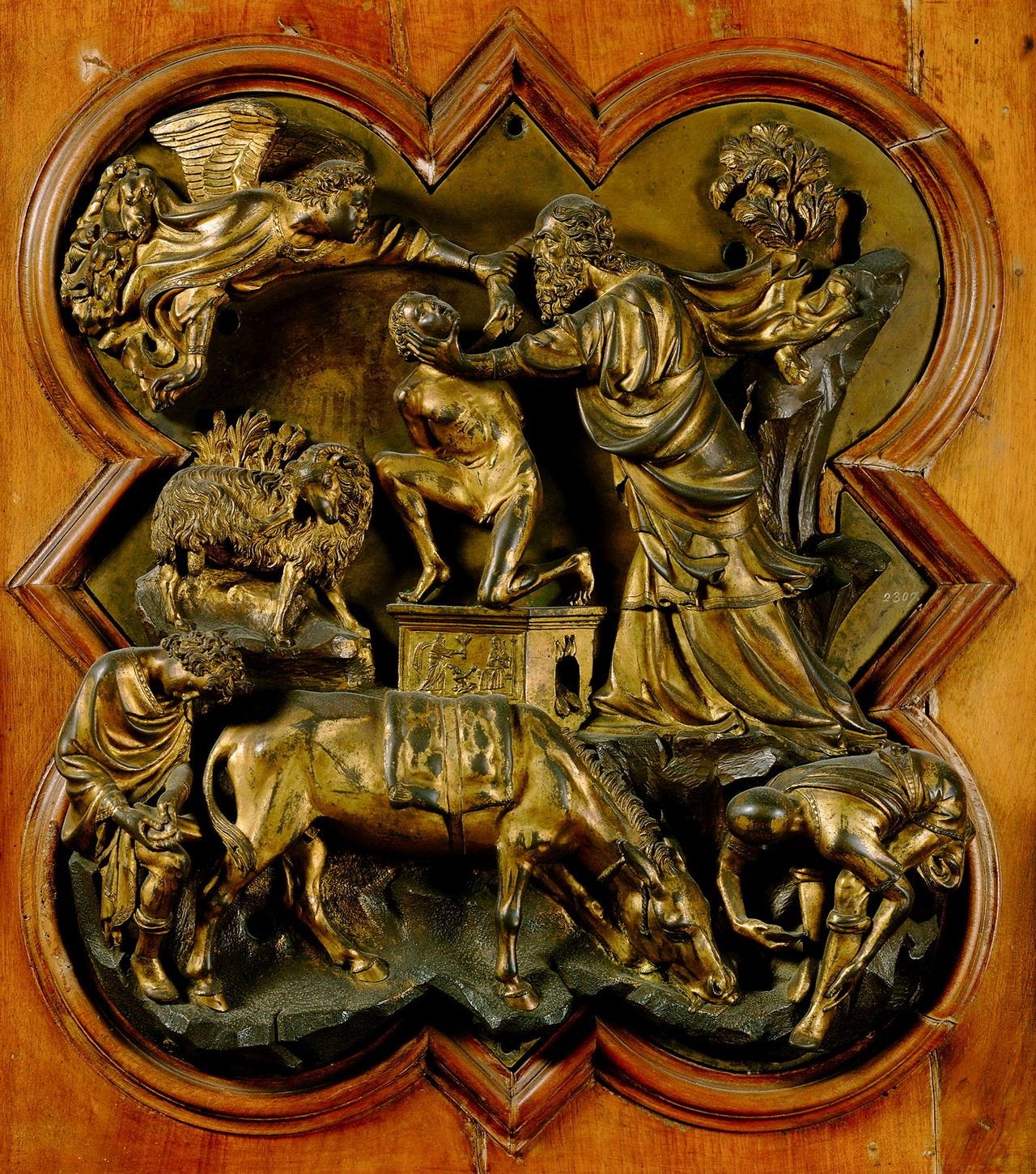
(Lost Wax) Cast Bronze Sculpture'; quatrefoil shape
Filippo Brunelleschi’s Sacrifice of Isaac; body in movement
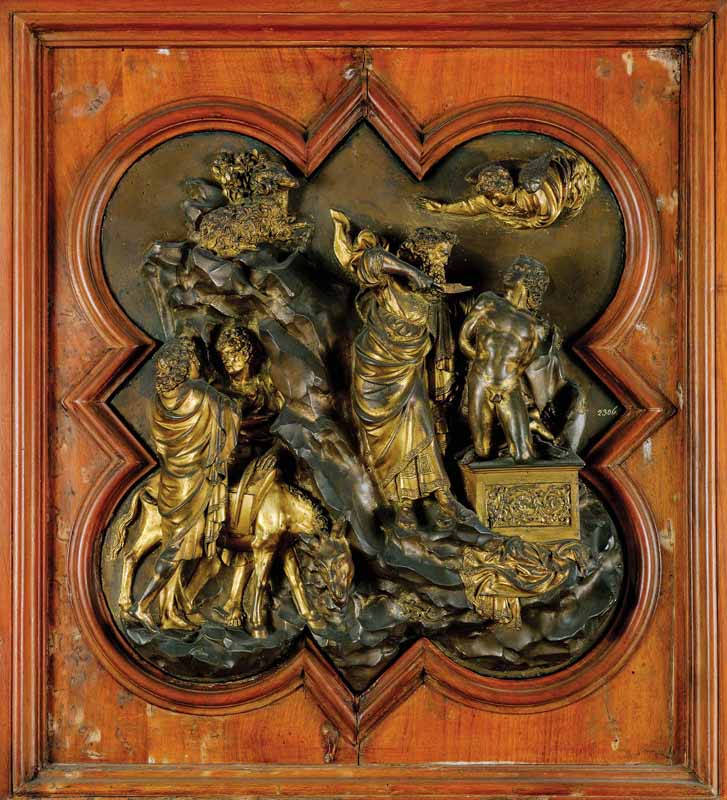
Cast Bronze Sculpture; quatrefoil
Lorenzo Ghiberti’s Sacrifice of Isaac; psychologically engaging
Who won the Florence Baptistery Door Competition?
Lorenzo Ghiberti because he used a hollow cast for his bronze cast sculpture (lost-wax casting technique), which is cheaper to produce; his sculpture is also more psychologically deep than Brunelleschi’s

Who called Ghiberti’s Florence Baptistery Doors “Gates of Paradise“?
Michelangelo
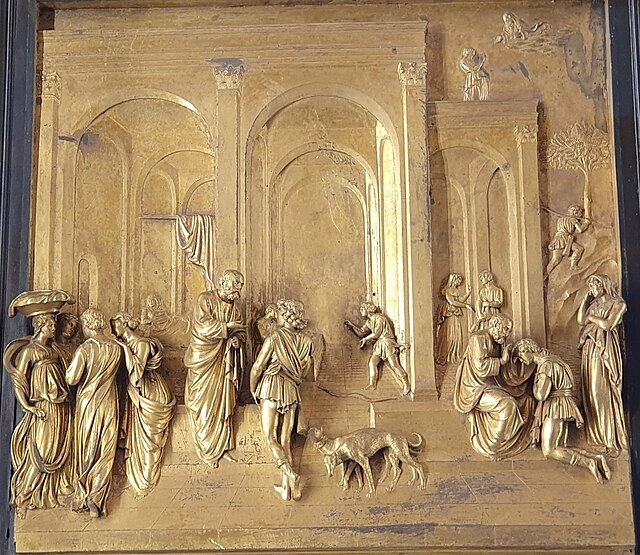
Lost Wax Casting (Bronze) Sculpture
Lorenzo Ghiberti’s Isaac and Sons Jacob and Esau at Florentine Gates of Paradise (east side)
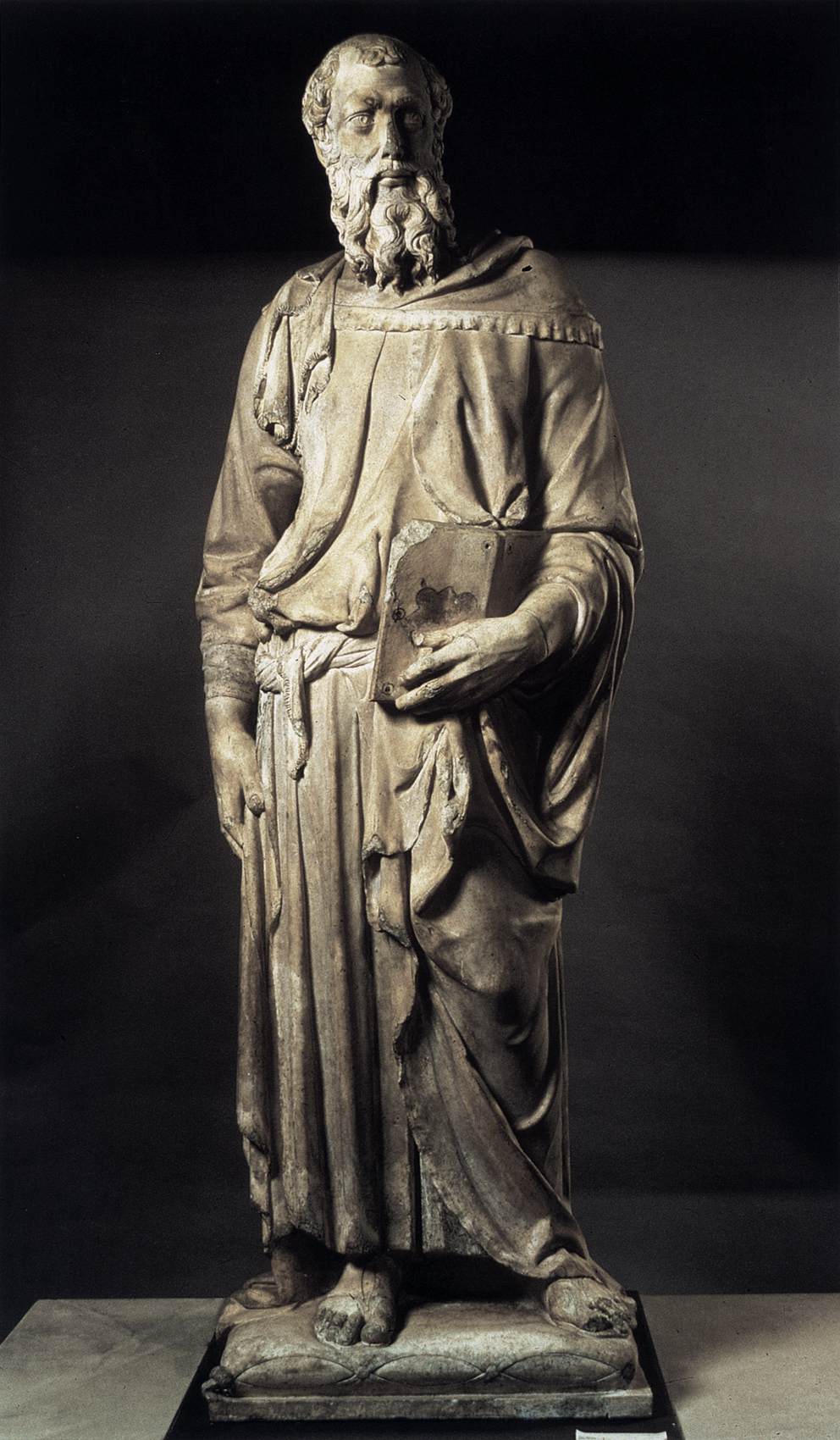
Marble Freestanding Sculpture (statue) commissioned by Linen Drapers + Peddlers Guild; fully dresses
Donatello’s St. Mark; Public Commission for Orsanmichele Church, Florence; contrapposto
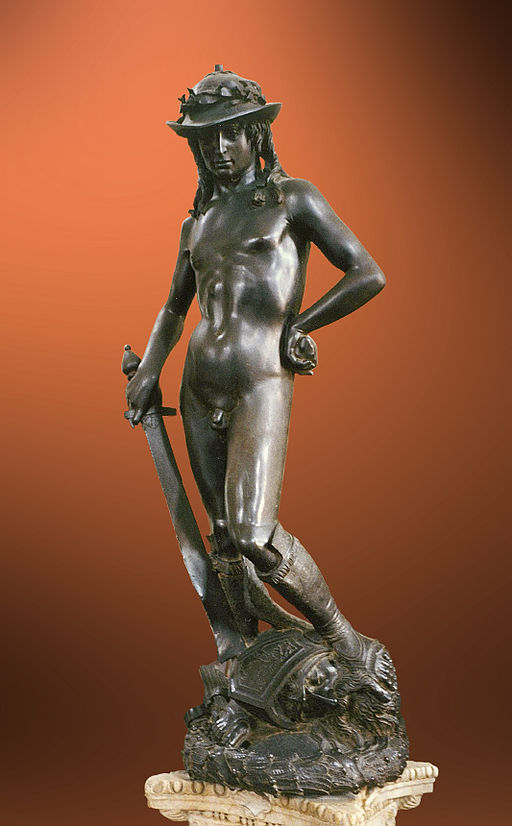
Cast Bronze Freestanding Sculpture (statue) commissioned by the Medici Family (rulers of Florence); nude
Donatello’s David; private commission for the Medici palace garden; civic symbol (understood power, ref. Cosimo de Medici); contrapposto; life-sized; set in relation to the viewer
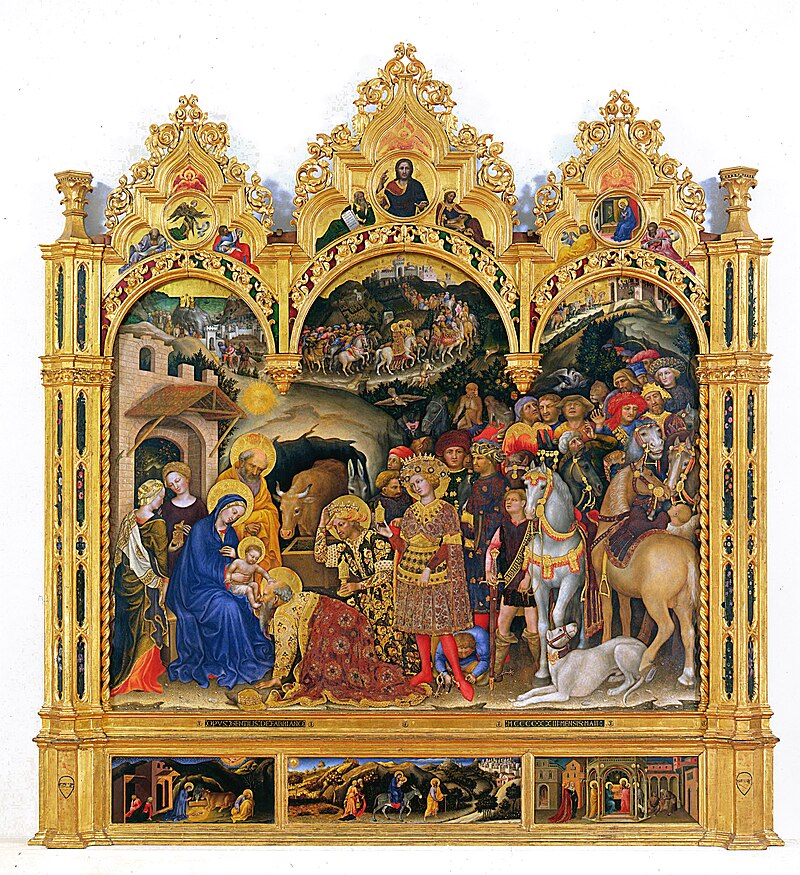
Altarpiece, Strozzi Family Chapel, Florence
Gentile da Fabriano’s Adoration of the Magi; antithesis; foreshortening (difficultà); sfumato; cast shadow; gilded; Pala Strozzi (patron) portrait
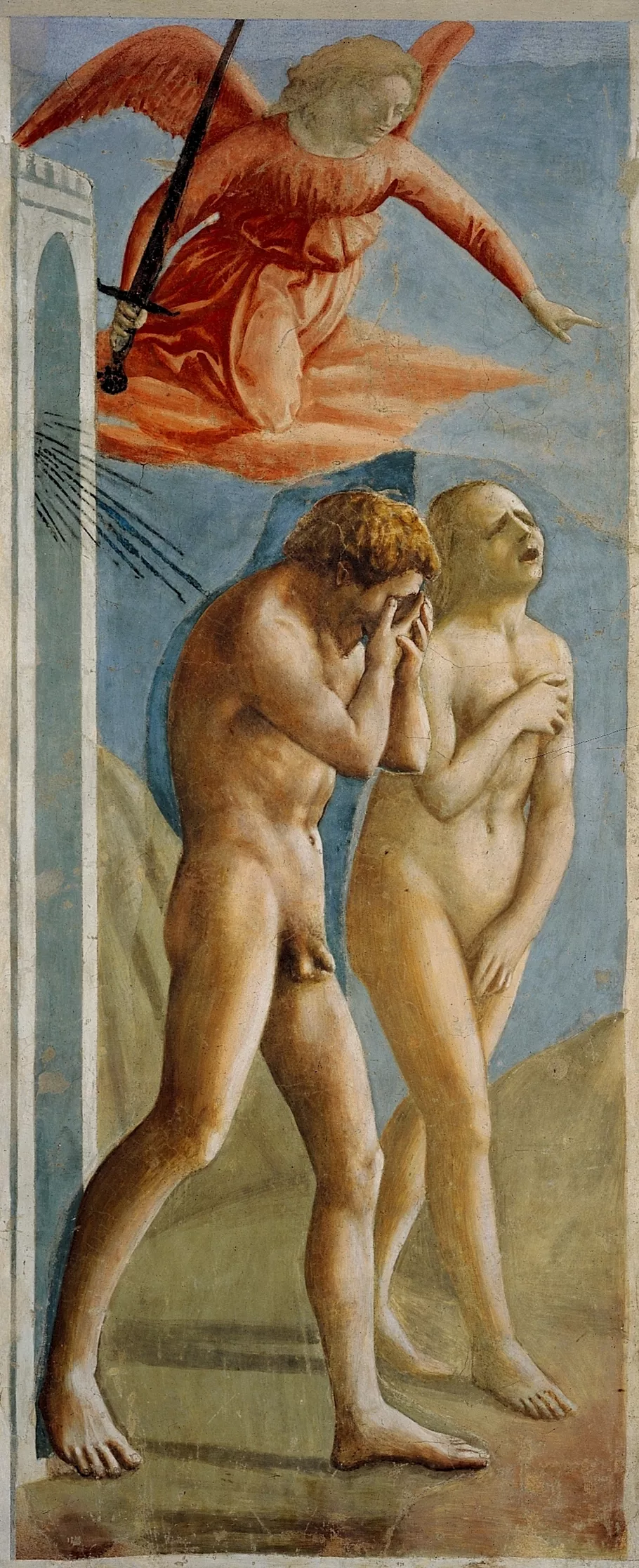
Fresco in Sta. Maria della Carmine Brancacci Chapel, Florence
Masaccio’s Expulsion of Adam and Eve from Eden; references Greek Antique statue “Modest Venus“ pose and “Apollo Belvedere“ torso; optical modeling
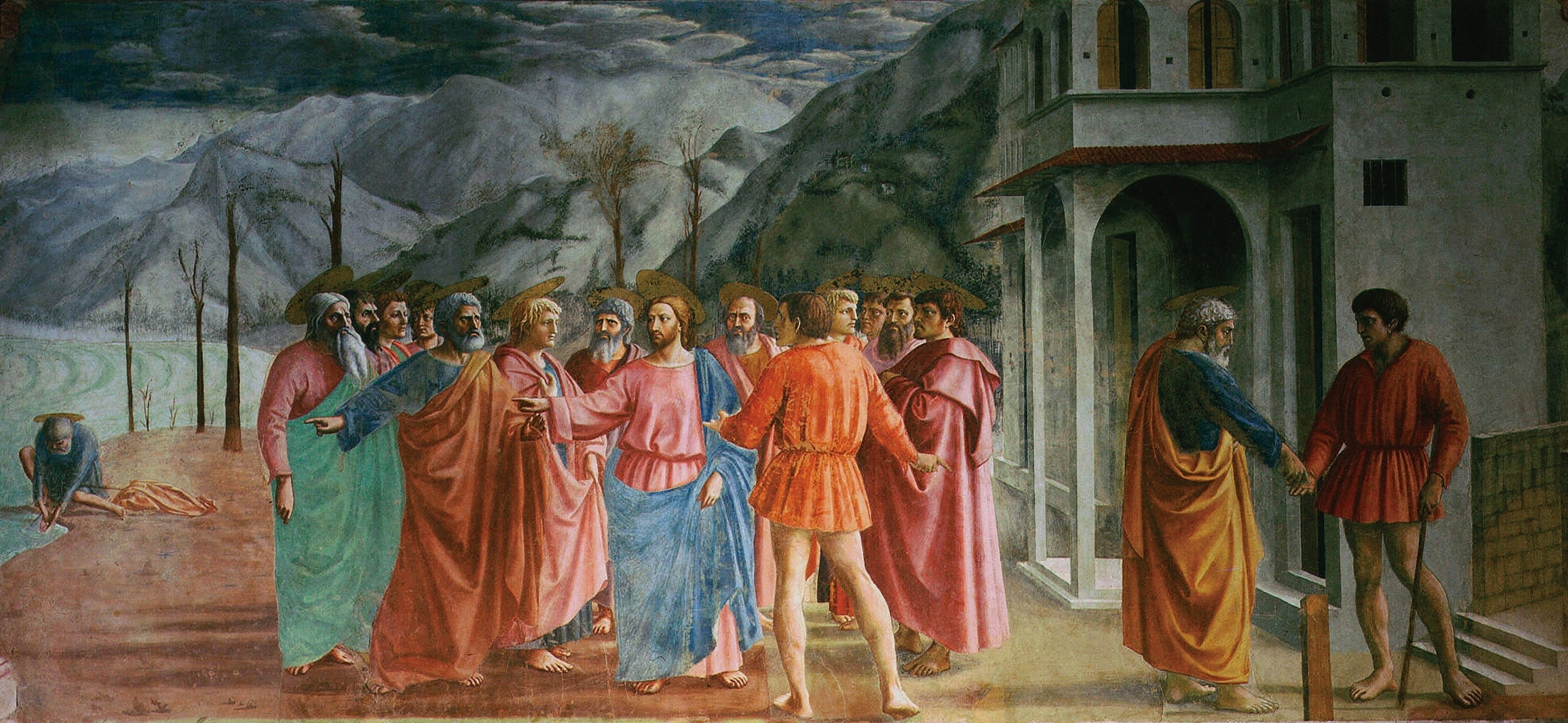
Fresco in Sta. Maria della Carmine Brancacci Chapel, Florence
Masaccio’s Tribute Money; chiaroscuro; contrapposto; linear perspective; atmospheric perspective; foreshortening (difficultà)
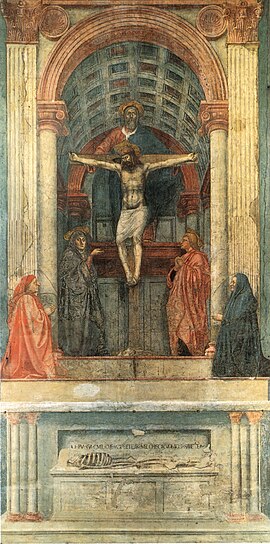
Fresco in Gothic Church of Sta. Maria Novella, Florence
Masaccio’s Holy Trinity; “memento mori”; low vanishing point (+3D hierarchy for the viewer); linear perspective; foreshortening (difficultà); live-size figures; donor portraits (Lorenzo Lenzi +his wife)
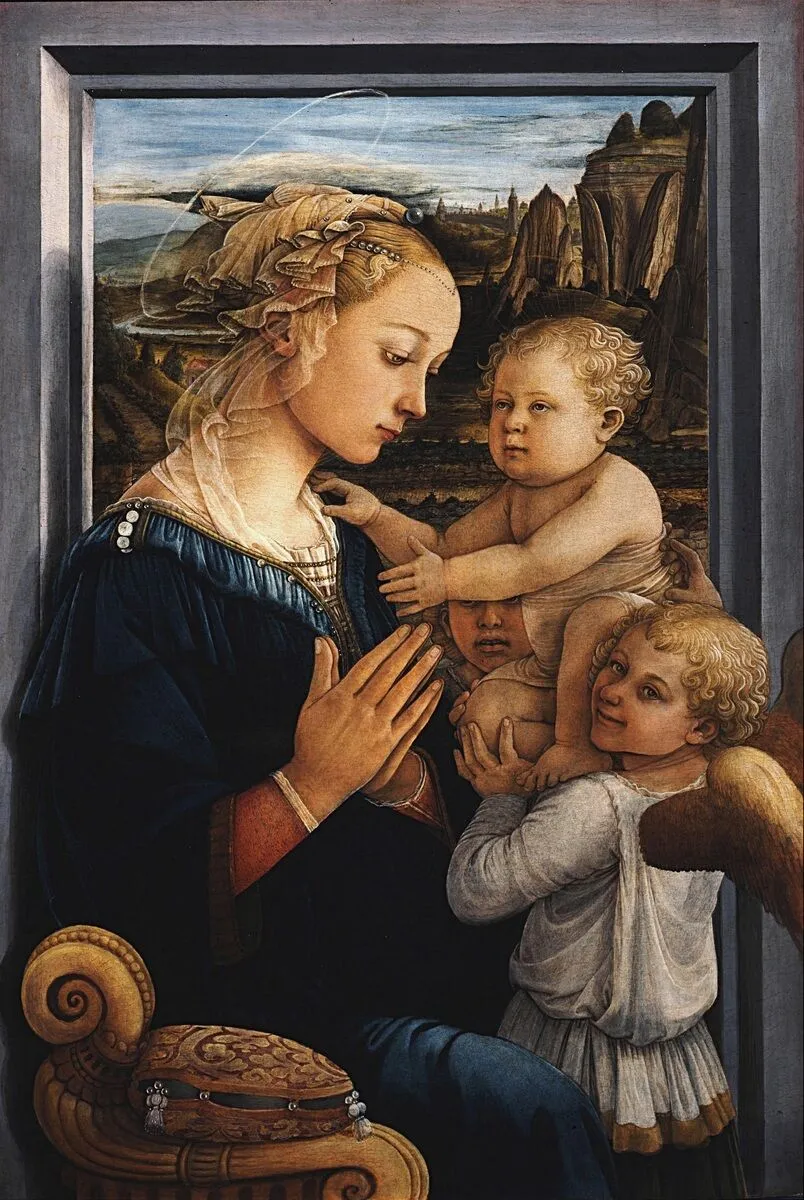
Panel Painting for the Medici Villa of Poggio Imperiale, Florence; half-length
Fra Filippo Lippi’s, Madonna and Child with Angels; private commission; references Masaccio’s Holy Trinity; cast shadows; references Masaccio’s Tribute Money (atmospheric perspective); chiaroscuro; sfumato
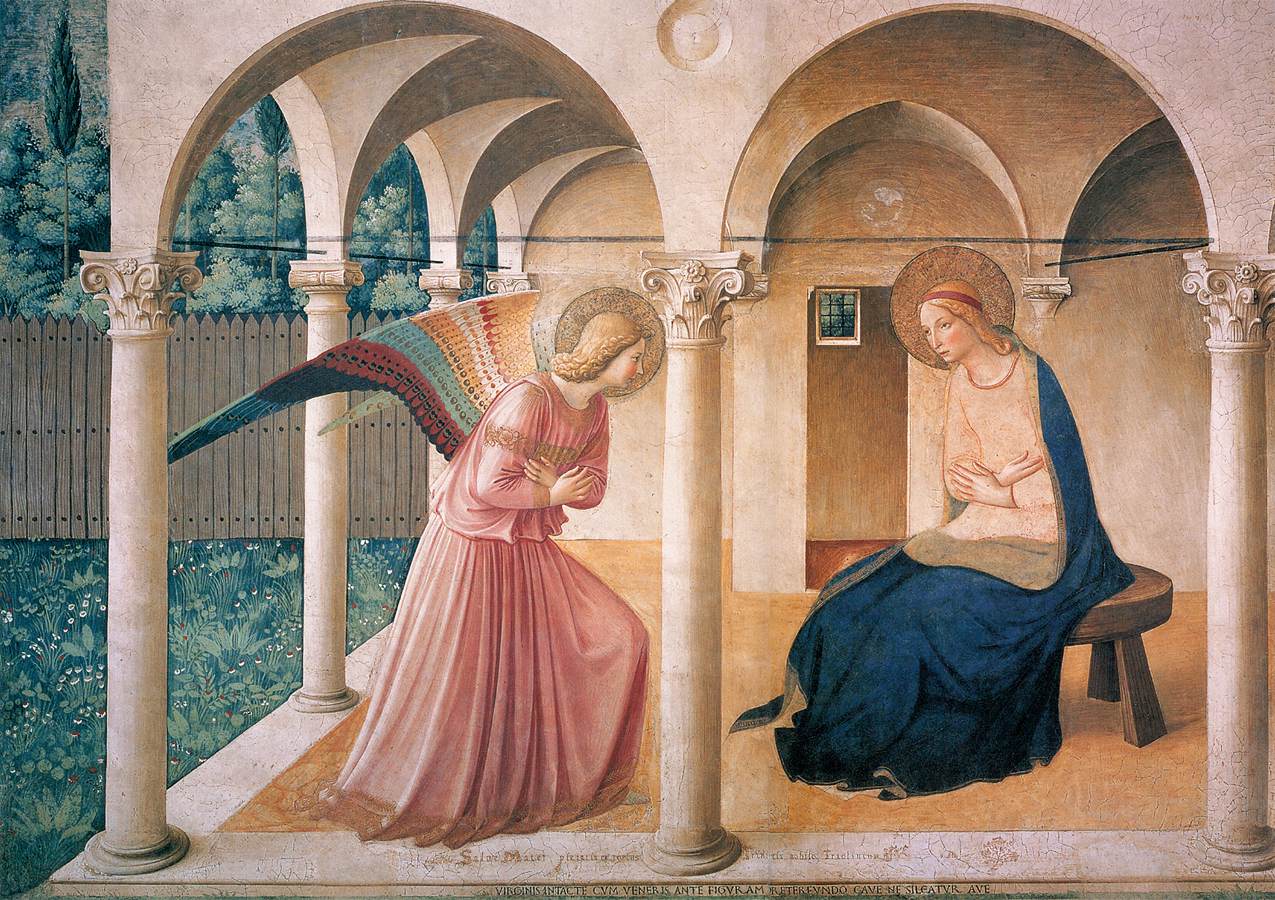
Fresco; commissioned by Dominican Monastery of San Marco, Florence
Fra Angelico’s Annunciation; linear perspective (vanishing point between Mary and angel’s heads / glass window); flat garden pattern; chiaroscuro modelling
Contrapposto
Asymmetrical pose with weight unequally distributed between the 2 legs
Atmospheric (aerial) Perspective
Used to create 3D space on a flat surface by making objects further away paler and less contrasted in relation to the objects that are close (higher contrast)
Linear Perspective
Used to create a 3D space on a flat surface using geometry; researched by Filippo Bruneleschi (architect, bronze sculptor), Leon Battista Alberti (wrote an explanation), and Pierro della Francesca (painter, wrote a treatise + illustrations)
Vanishing Point
Point on the horizon line that corresponds to the position of the ideal viewer (ex. in front of the painting)
Orthogonals
Parallel lines perpendicular to the picture plane that appear to merge at the vanishing point
Transversals
Parallel horizontal lines that indicate constant unit of measurement in virtual space; the further they appear to recede, the shorter the intervals between them
Monumentalism / Monumentality
The larger the scale of the figure/object in relation to other figures/objects in the artwork or to the viewer = the more significant it is
Optical Modelling
Uses optical illusions and incorporates them in artwork for a sense of depth or monumentality
Sfumato
Soft shading technique that shows a gradual transition between different colors and patterns
“Memento Mori”
Latin phrase translating as “remember about death“ or “remember, you must die“; in art, used to portray the inevitability of death (ex. Masaccio’s Holy Trinity)
Bronze Casting Sculpture Technique
make a wax model
make a mold of the wax model + fill it with melted bronze
remove bronze sculpture from mold
correct flaws, add details, and polish
Was used less often than marble and only used for important monuments; bronze also lasts longer than marble
Lost Wax Casting Technique
make a core out of clay + model it in wax
insert metal core pins into the core + build network of wax rods around wax form
build an investment (fireproof layer) around the whole thing and put in oven for wax to melt away
fill in the empty space with molten bronze through the wax rods (1900°F)
when cooled off, remove investment, sheer off core pins at surface level, and cut off bronze spruces
repair casting flaws, add details (chasing), add patina, and polish
Cheaper than just Bronze Casting as it uses more bronze
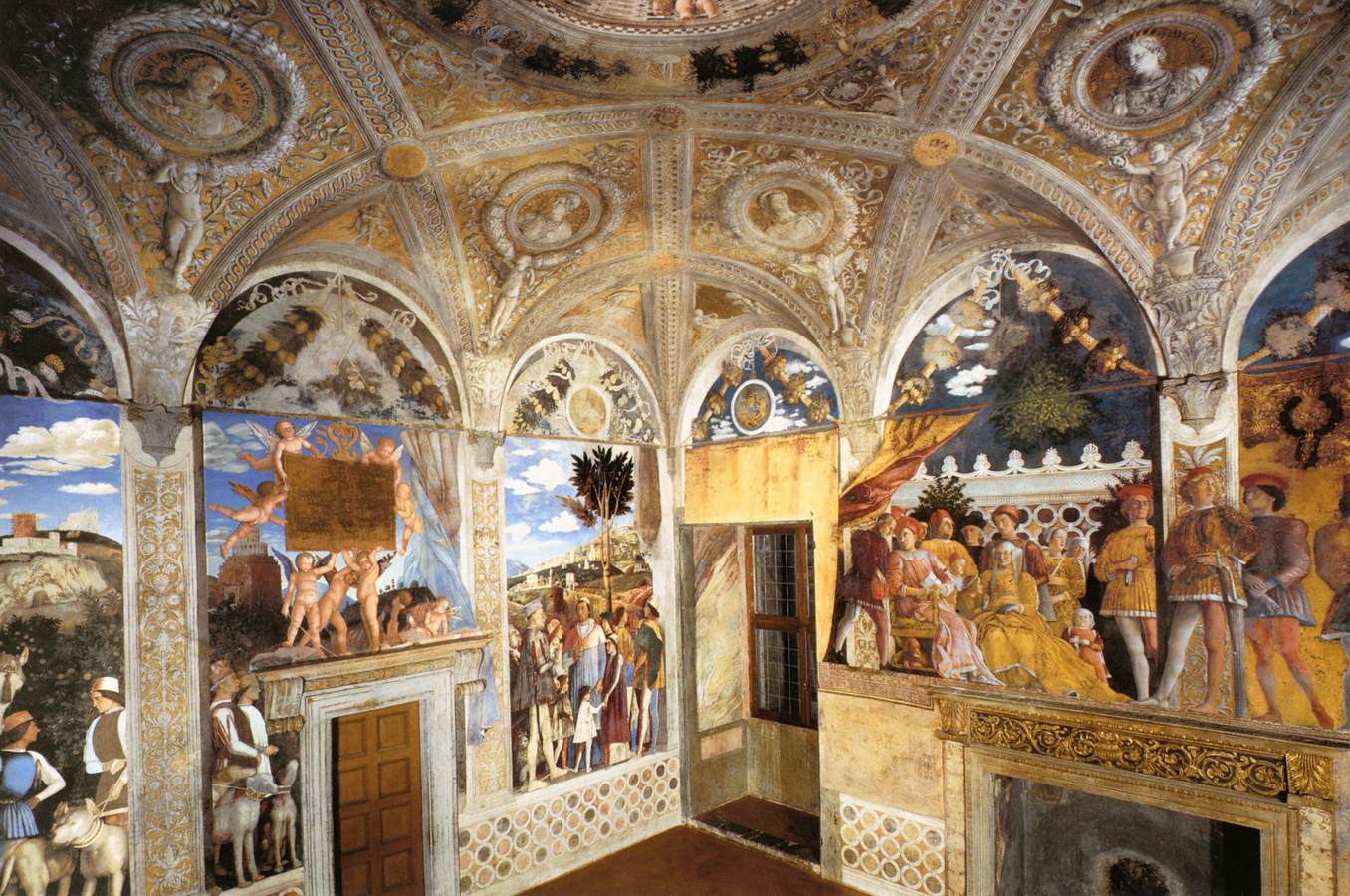
Fresco in Ducal Palace, Mantua; commissioned by Ludovico Gonzaga (ruler of Mantua)
Andrea Mantegna’s Camera degli Sposi; 3D illusion; skylight illusion (foreshortening, difficultà); “di sotto in su“
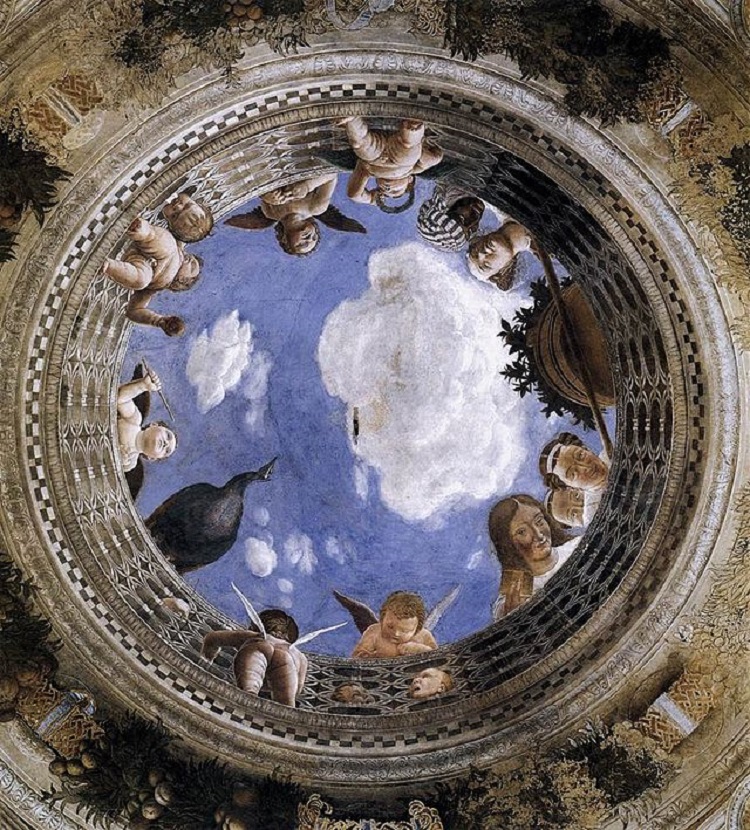
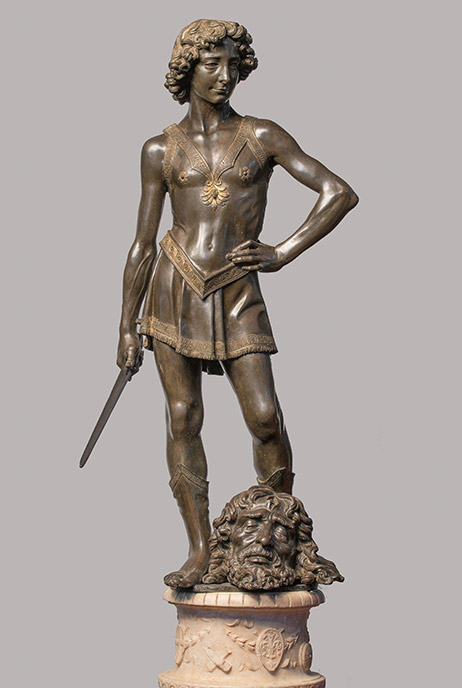
Cast Bronze Sculpture made for the Medici palace, Florence
Andrea del Verrocchio’s David; contrapposto; smaller than life-size; not set in relation to the viewer; private commission for the Medici
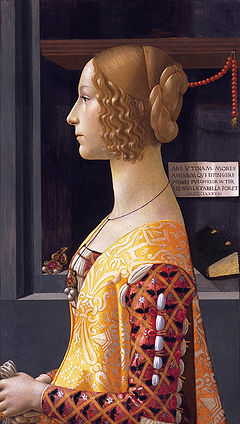
Tempera painting commissioned by Lorenzo Tornabuoni after his wife’s death
Domenico Ghirlandaio’s Portrait of Giovanna Tornabuoni; perfect profile (referencing Roman coins/classical portrait style); flattened surface + contour
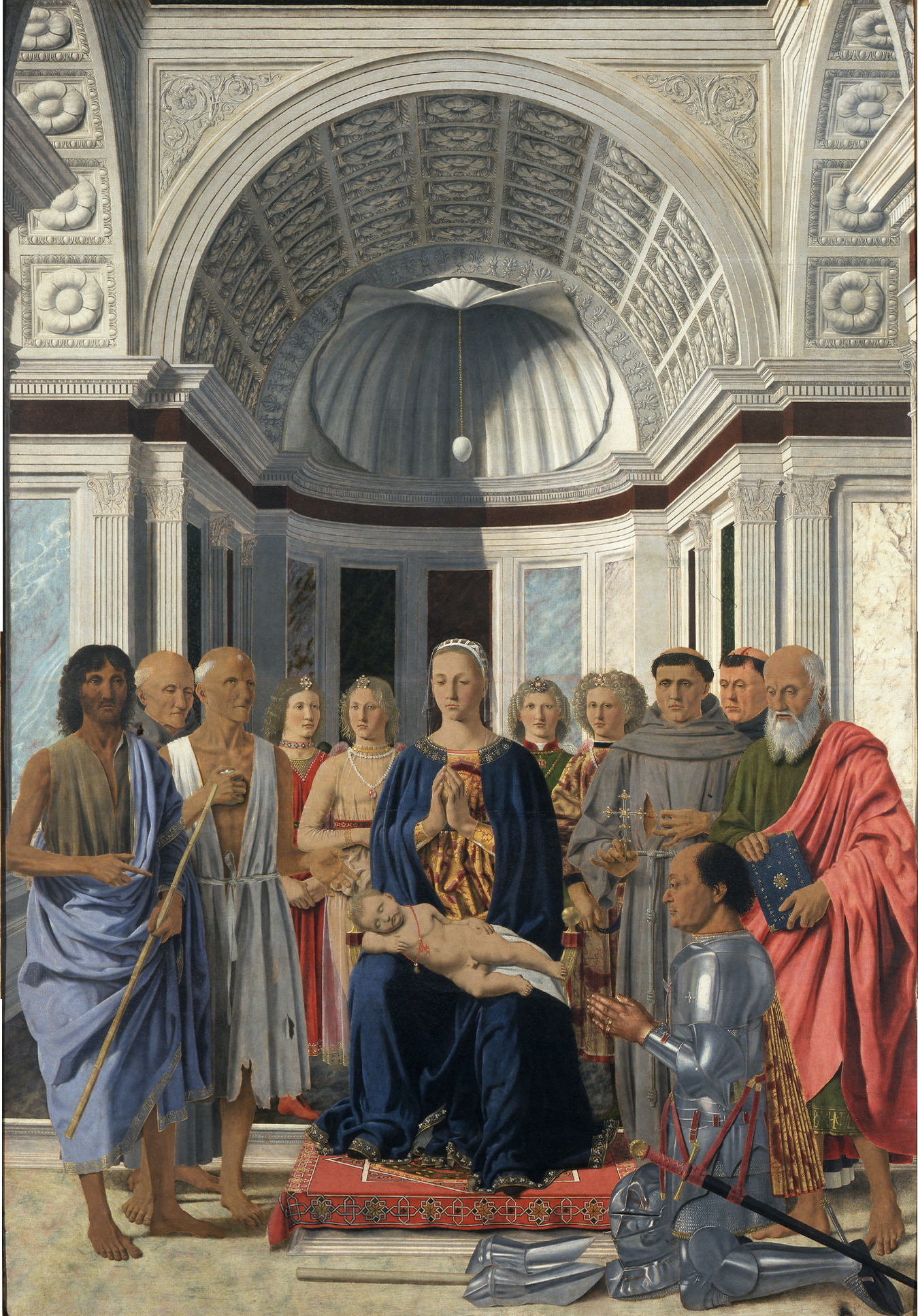
Commissioned by an Urbino ruler, Frederico da Montefeltro
Piero della Francesca’s Brera Altarpiece (Madonna); sacra conversazione; donor portrait; linear perspective (vanishing point behind Mary’s head); almost symmetrical
![<p>Church of […]</p>](https://knowt-user-attachments.s3.amazonaws.com/59db3a53-7c07-4fb5-bdd3-811c0d6c762e.png)
Church of […]
Leon Battista Alberti’s Church of Sant’ Andrea labeling:

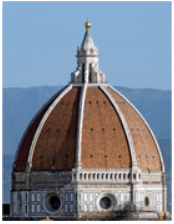
Cathedral of Saint Mary of the Flower
Filippo Bruneleschi’s Dome of Florence Cathedral interior structure:
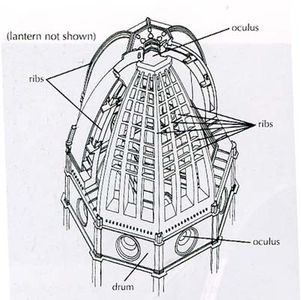
![<p>Church of […]</p>](https://knowt-user-attachments.s3.amazonaws.com/1e7dbedc-73e0-4429-8201-a61ed1fde947.png)
Church of […]
Filippo Bruneleschi’s Church of Santo Spirito plan:

“di sotto in su“
“from below, looking up“ (type of foreshortening)
“sacra conversazione“
“holy/sacred conversation“ — type of painting that depicts Saints and angels from different time periods all in one space
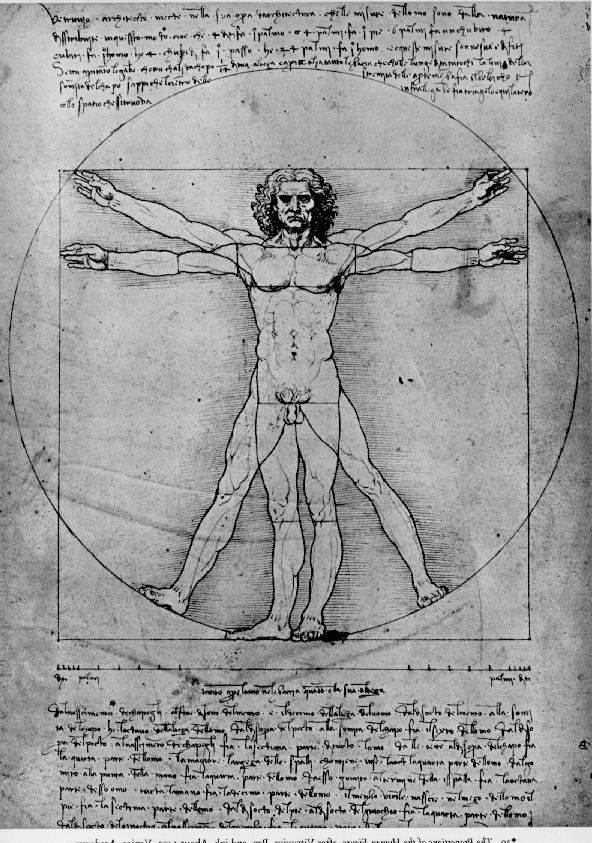
Anatomy reference for many Renaissance artworks
Leonardo Da Vinci’s Vitruvian Man; shows the ideal anatomical proportions of a human male; used in art as reference
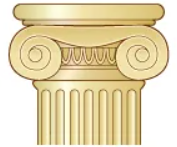
Capital order that is often compared to women
In Vitruvian terms, Ionic capital order is “shaped like a good-looking woman“
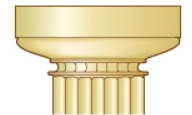
Capital order that is often compared to men
In Vitruvian terms, Doric capital order is “shaped like a good-looking man“
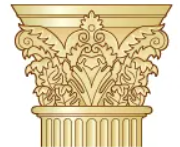
Capital order that is often associated with virgin women (maidens)
In Vitruvian terms, Corinthian capital order is “shaped like a maiden“
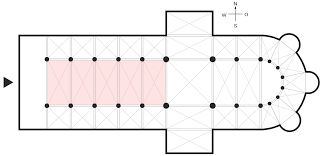
Nave — central part of a church, typically extending from the main entrance to the transepts or chancel
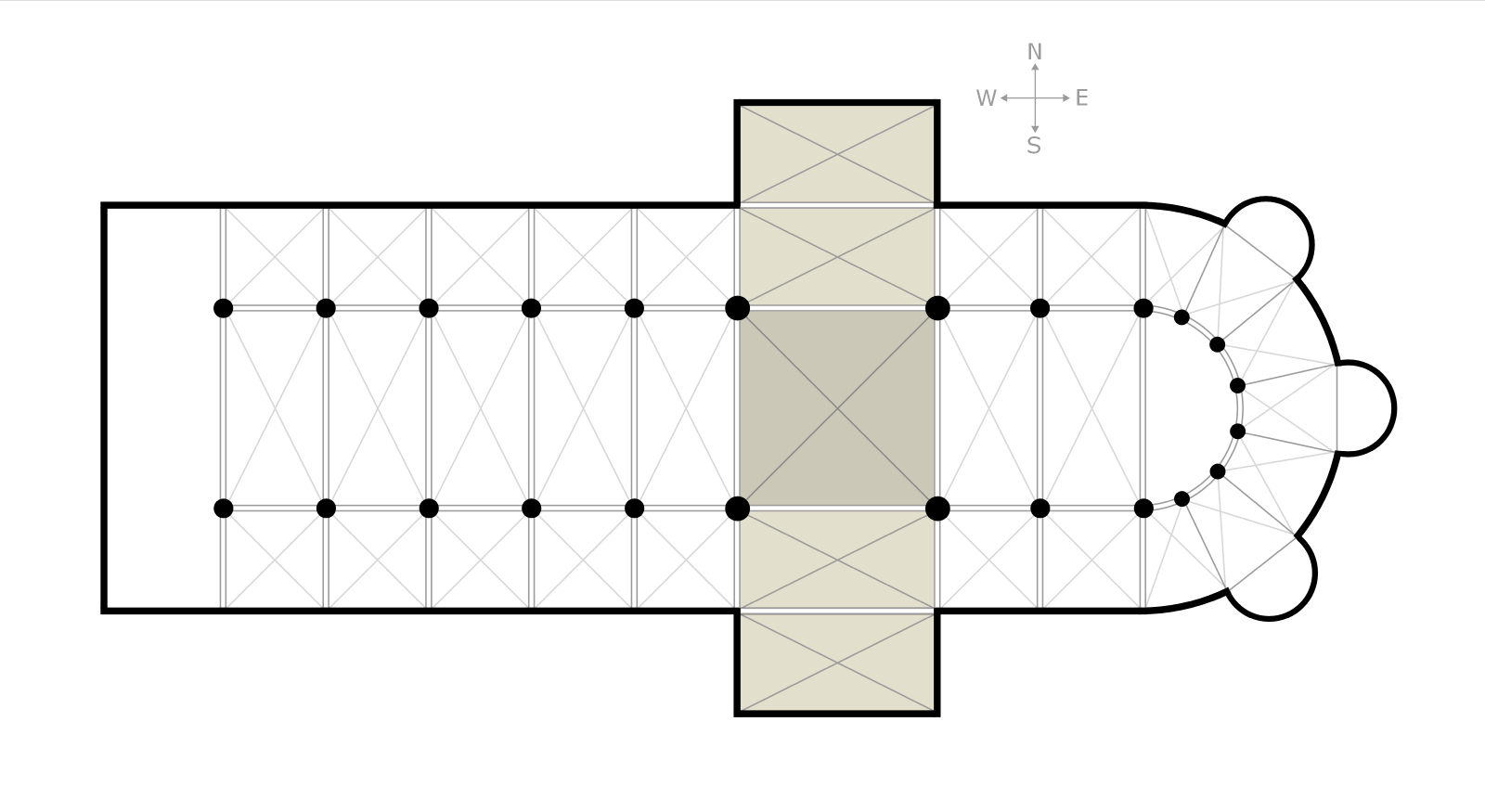
Transept — the section of a building that runs perpendicular to the nave, forming a kind of cross shape
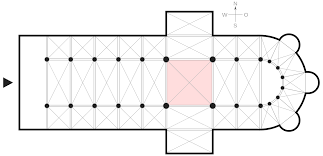
Crossing — area where the four arms (nave, transept, and choir) of a cross-shaped church meet
![<p>Types of […]</p>](https://knowt-user-attachments.s3.amazonaws.com/2d095dae-eccd-4fe4-9ccb-dbbe28c2ed36.png)
Types of […]
Pediments — typically triangular upper part of the front of a building in classical style which supports the roof
Art in Florence under the Medici rule
Medici family often patronized humanists (ex. Raphael) to portray influential family members (ex. Cosimo de’ Medici); Medici rule also lead to a higher interest in classical antique themes and surfaces (rather than depth); higher use of decorative lines and patterns
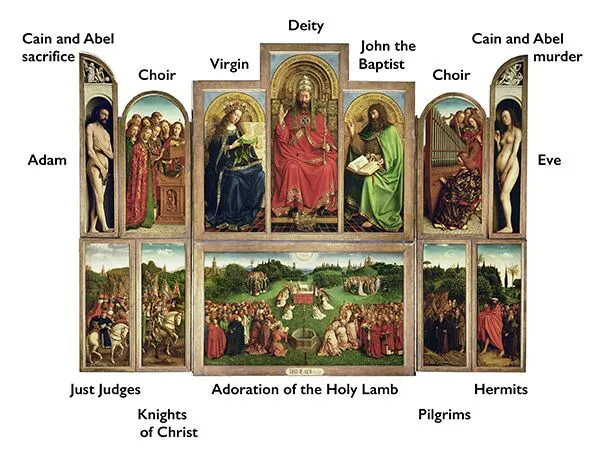
Altarpiece’s original place was in church of St. John Ghent (Flanders); now in Cathedral of St. Bavo (Ghent, Belgium)
Jan van Eyck’s Ghent Altarpiece; polyptych; Flemish oil painting technique; use of linear perspective; optical modeling (chiaroscuro); donor portraits (Joost Vijdt and his wife Lysbette Borluut)

Altarpiece painting commissioned by the Guild of Crossbowmen (the Archers of Leuven)
Rogier van der Weyden’s Prado Deposition aka Descent from the Cross; was repeatedly imitated in 15th and 16th centuries; 2 crossbows reference the commissioners; Flemish realism; chiaroscuro, sfumato; references Netherlands’ Passion Altarpiece
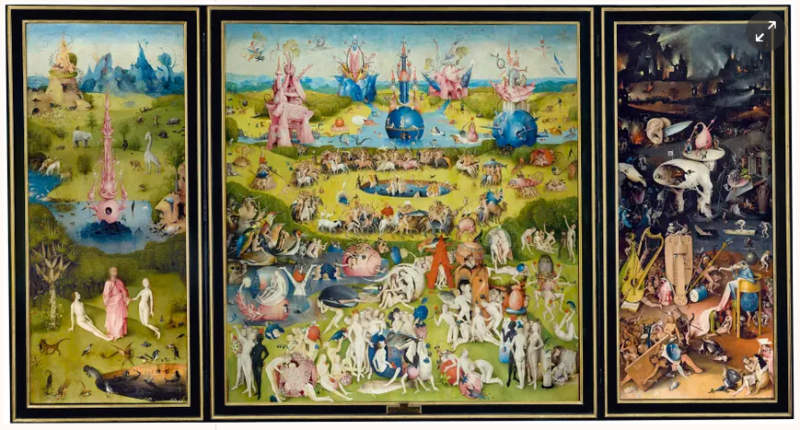
Triptych Altarpiece, original place: Nassau Palace of Coudenberg, Brussels; commissioned by Engelberg II, Count of Nassau
Hieronymus Bosch’s Garden of Earthly Delights; oil on oak panel; references Catholic ideas and condemns them
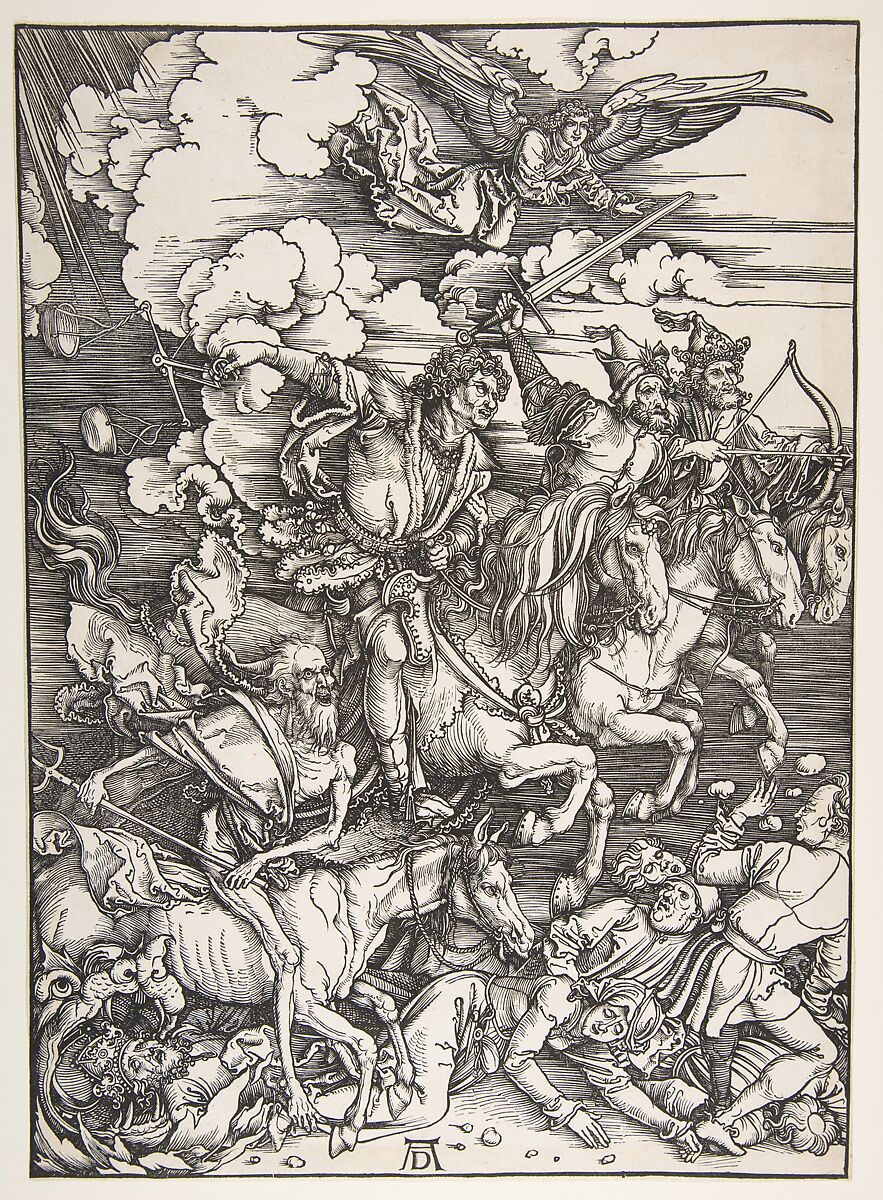
Woodcut print image + text on the back
Albrecht Dürer’s 4 Horsemen of Apocalypse; references anonymous Bible imagery print depicting 4 Horsemen as: skeleton man(death), man with scales (famine), man with sword (war), man with bow and arrow (plague/pestilence); hatching and cross-hatching shading technique
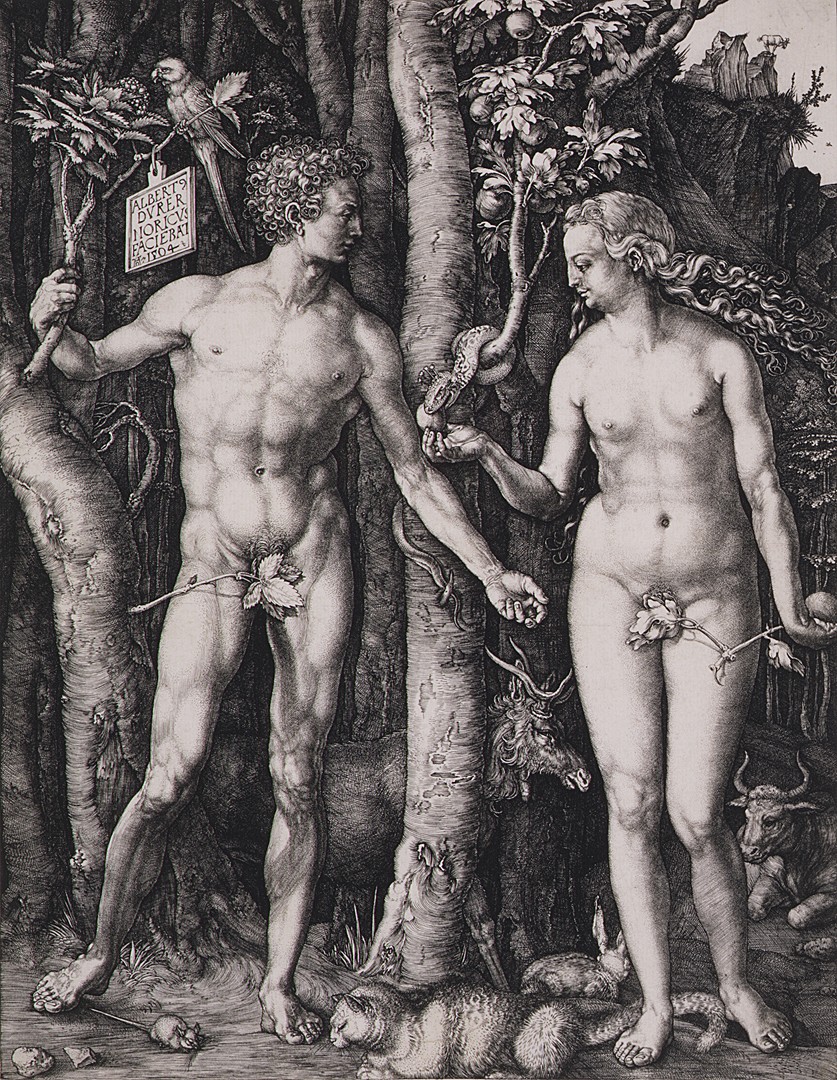
Copper plate engraving (printed)
Albrecht Dürer’s Adam and Eve; 4 animals represent temperaments: rabbit (sanguine = optimism, social), cat (choleric = short-tempered, irritable), ox (phlegmatic = peaceful, relaxed), elk (melancholic = analytical, quiet); Northern Symbolism + Renaissance Ideal (nudity = as created by God)
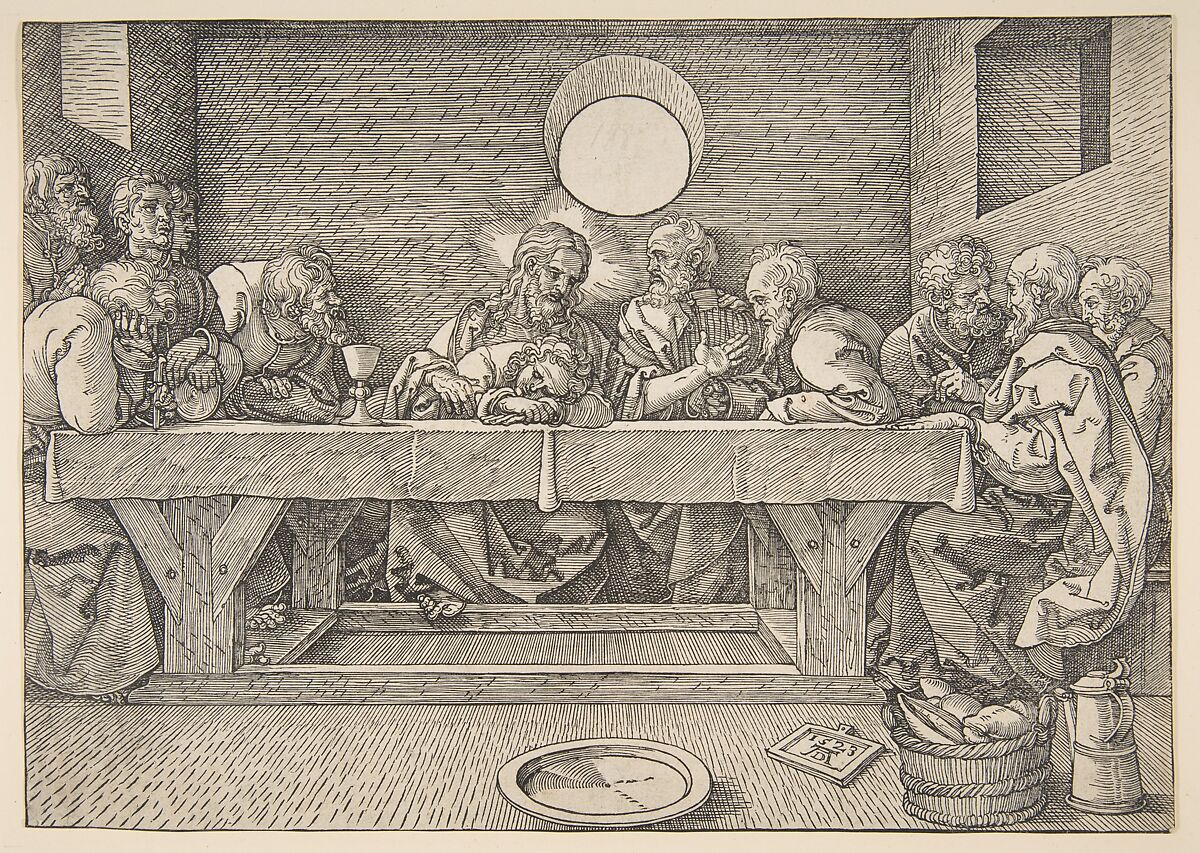
Woodcut print opposes painter’s earlier (Catholic) imagery (The Large Passion)
Albrecht Dürer’s Last Supper; opposes Catholic imagery (crucifixion isn’t a sacrifice = empty tray w/o lamb; only 11 apostles are present = not a betrayal)
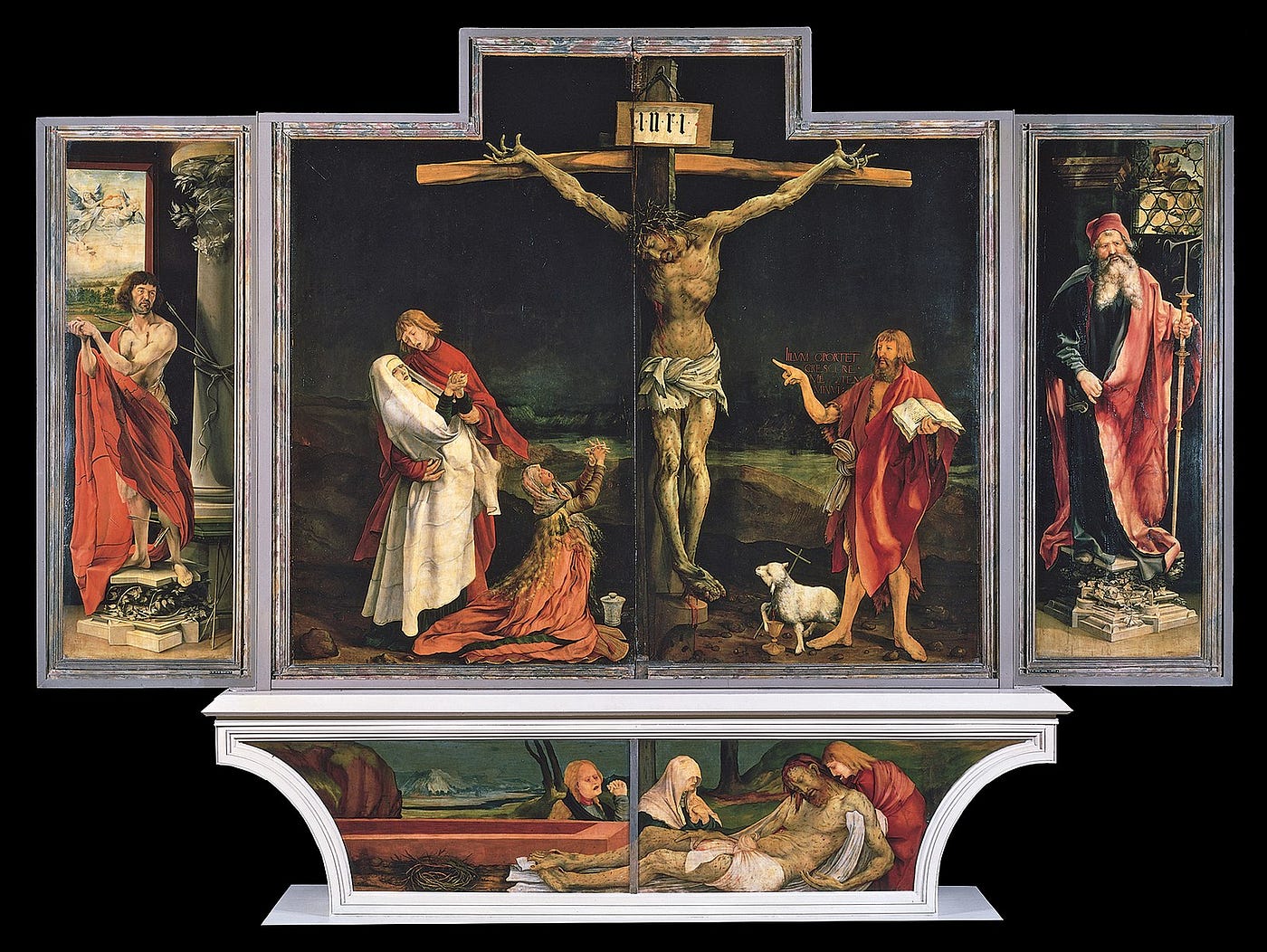
Oil on panel polyptych Altarpiece painting, hospital chapel at the Monastery of St. Anthony in Isenheim, Alsace
Grünewald’s Isenheim Altarpiece; made before Protestant Reformation; most commonly viewed by the patients of plague
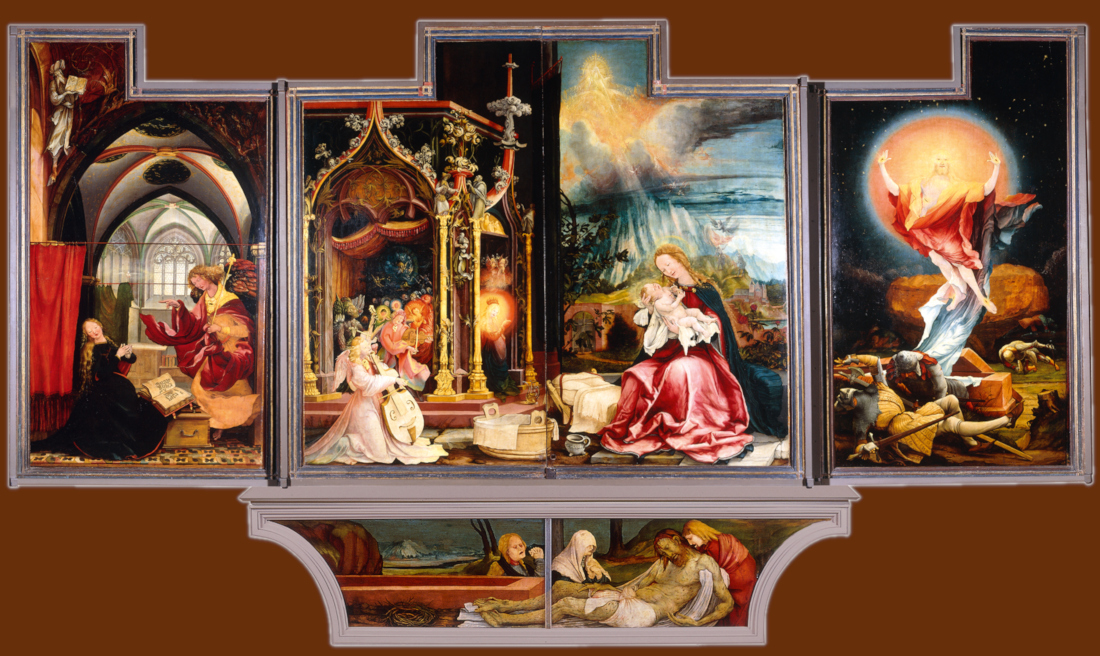
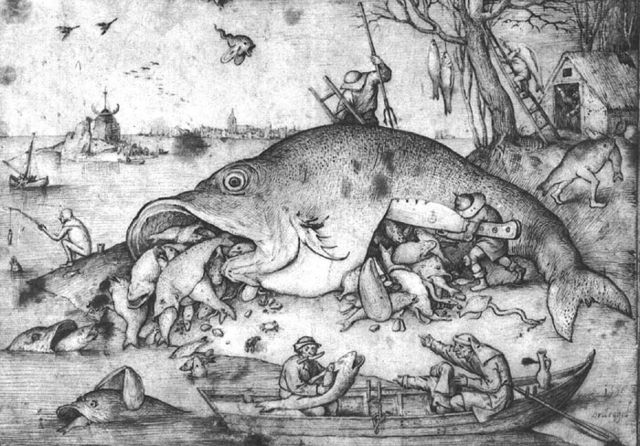
Drawing, later turned to an engraved print
Pieter Bruegel the Elder’s Big Fish Eat Little Fish; later used as a reference for Pieter van der Heyden’s Big Fish Eat Little Fish

Oil on panel painting
Pieter Bruegel the Elder’s Christ Carrying the Cross; traditional composition; incorporates some Mannerism

Oil and egg tempera on panel; ¾ portrait of a Humanist
Hans Holbein the Younger’s Erasmus of Rotterdam; Flemish Realism; some chiaroscuro

Woodcut with thousands of impressions (copies); example of religious propaganda + support Luther and his Protestant Reformation movement of the 15th century Northern Europe
Lucas Cranach the Elder’s Allegory of Law and Gospel (aka: The Old and New Testament); Protestant themes (salvation through God’s grace) vs. Catholic themes (salvation through good deeds and buying indulgence); references an earlier oil on panel painting Law and Grace by Cranach
Oil on panel painting; example of religious propaganda which was used to support Martin Luther’s Protestant Reformation Movement (Luther translated the Bible from Hebrew and Greek to the local languages for people to have a more direct relationship with God)
Lucas Cranach the Elder’s Allegory of Law and Grace; opposes Catholicism and its interpretation of the Bible
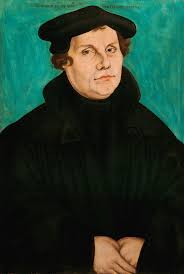
Martin Luther
Wrote the 95 Theses against the Catholic Church and posted in Wittenberg, Germany; later lead the Protestant Reformation Movement in 15th Century Northern Europe
Protestantism
Opposed Catholicism; had a different interpretation of the Bible; didn’t like the use of art in churches and lead artwork to focus on other things besides religions
Diptych
2-panel painting (typically used for altarpieces)
Triptyth
3-panel painting (typically used for altarpieces)
Polyptyth
3+ panel painting (typically used for altarpieces)
Oil Paint
Associated with Flanders; its binding medium is drying oil instead of the egg yolks like in tempera hence it dries slower; built up from the surface
Oil Glazing Technique
Oil is translucent and through multiple layers of paint it creates complex colors and the bouncing light effect (illusion of reflection/transparency); allows smudging and blending since it dries slowly
Woodcut Printmaking Technique
A relief printmaking process in which a wood/block serves as matrix; edges might appear rough because lines were carved from the outside in; woodcut lines are made by carving away areas around them
carve away surface of wood (except for areas which are meant to print as lines or shapes)
ink the woodblock and put it in a press with paper
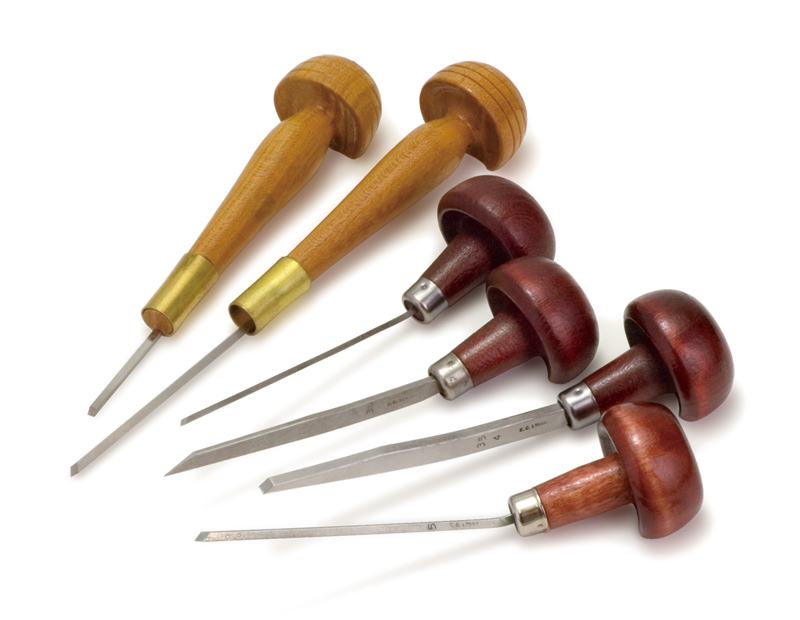
Burin
A steel tool used to carve/incise design into the cooper plate or woodblock; the hand in which you hold burin should be stationary and you only move the plate leaning on a soft cushion; lines’ thickness depends on how much pressure you apply
Intaglio
Printmaking technique that involves incising an image, typically into a metal plate, where the incised area holds ink to create a print
draw the design on the metal plate
incise the drawing into the plate
ink the plate
wipe the surface of the plate
run the plate through the press with a moistened sheet of paper on top of it and a pad/blanket on top of everything
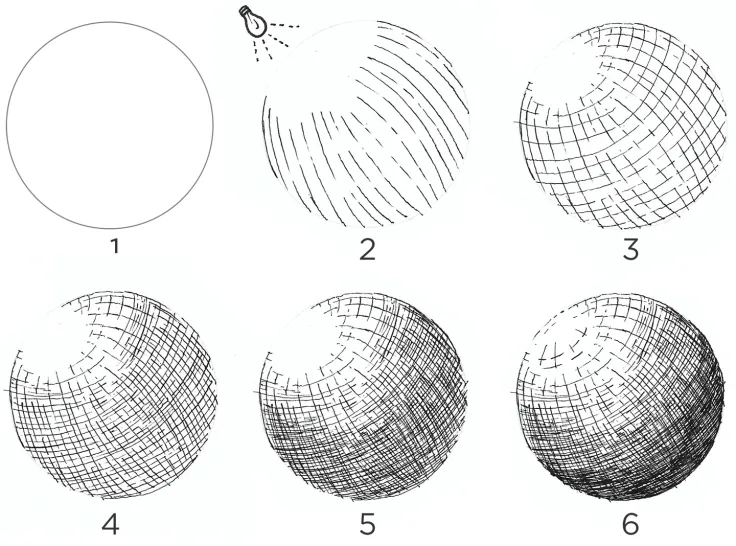
Crosshatching — shading style which uses crossing perpendicular lines to show shadow (the bigger the space between the lines the lighter the surface)
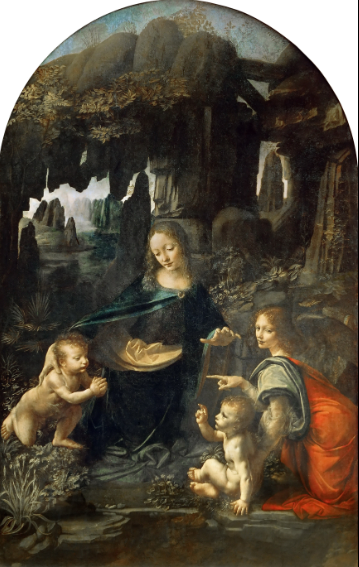
Arc shaped oil on panel altarpiece with life-sized figures; public commission; not finalized
Leonardo Da Vinci’s Virgin of the Rocks; pyramid composition; ground plan gap = a way to unite the figures when viewer “encloses“ the circle; a type of “Madonna of Humility“; chiaroscuro shadows; sfumato shading
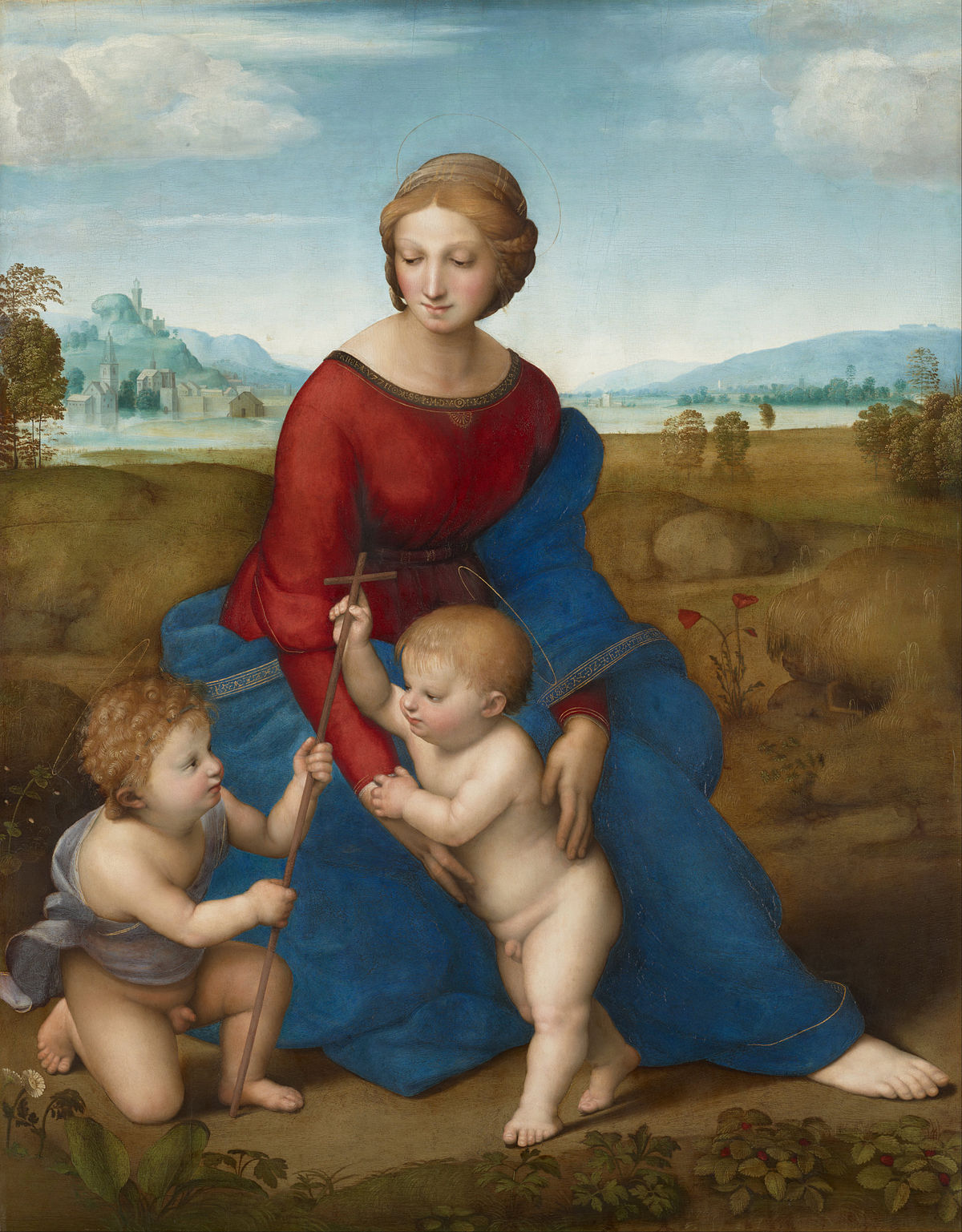
Privately commissioned half-size (of an average person) oil on panel painting; finalized
Raphael’s Madonna of the Meadow; pyramid structure (almost equilateral triangle); sfumato shading; no chiaroscuro; prior to drawing Raphael tried to sketch (and think) like Leonardo, referencing his Virgin of the Rocks
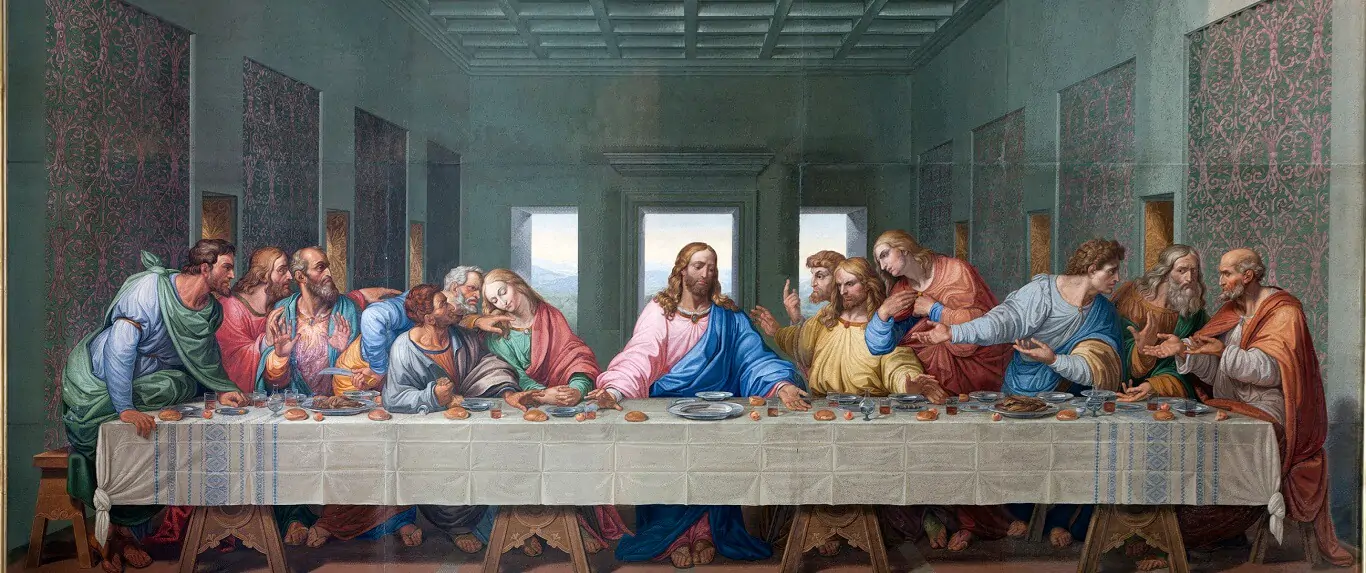
Fresco commissioned by Milanese monastery, church of St. Maria Delle Grazie, on the refractory dining Hall
Leonardo Da Vinci’s Last Supper; tempera a secco + oil glazing = brittle paint (controversial restoration); sfumato; 3D; disciples in the groups of three; Jesus in pyramid pose (= calm, stable); not traditional: Judas on the same side of the table as everyone else
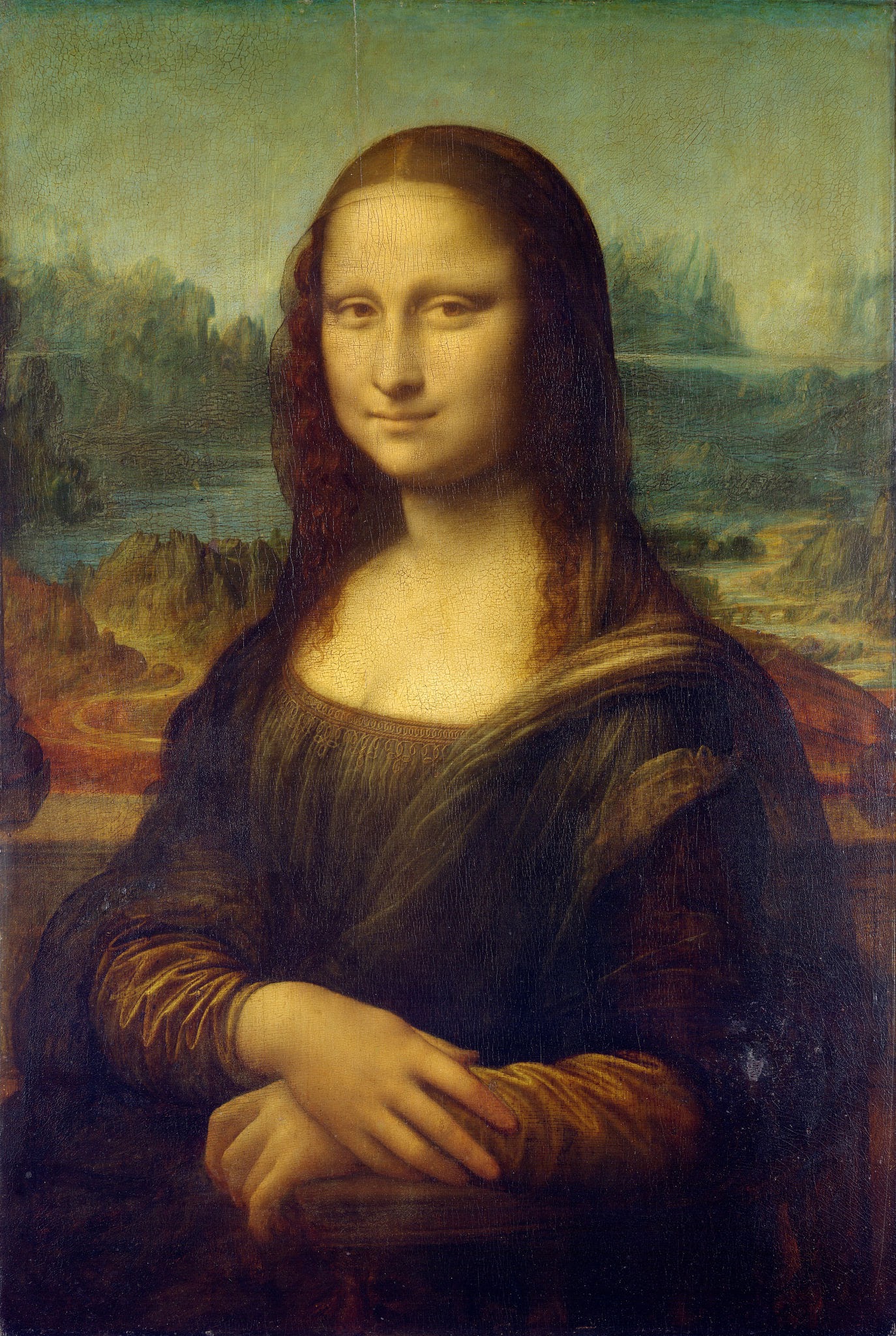
Under life-sized, oil on canvas painting
Leonardo Da Vinci’s Mona Lisa (Portrait of Lisa Gherardini, Mona — Madonna/My Lady); referenced in Raphael’s Portrait of a Woman with a Unicorn; sfumato; illusion of transformation/movement (subtle figura serpentinata)
Part 2 of a diptych fresco patronized by Agostino Chigi (private commission)
Raphael’s Galatea (part of the paired fresco: Polyphemus and Galatea); subtle sense of movement; monumentality; realistic figura serpentinata; mocks Michelangelo’s extreme/unreal figura serpentinata poses in Sistine Chapel
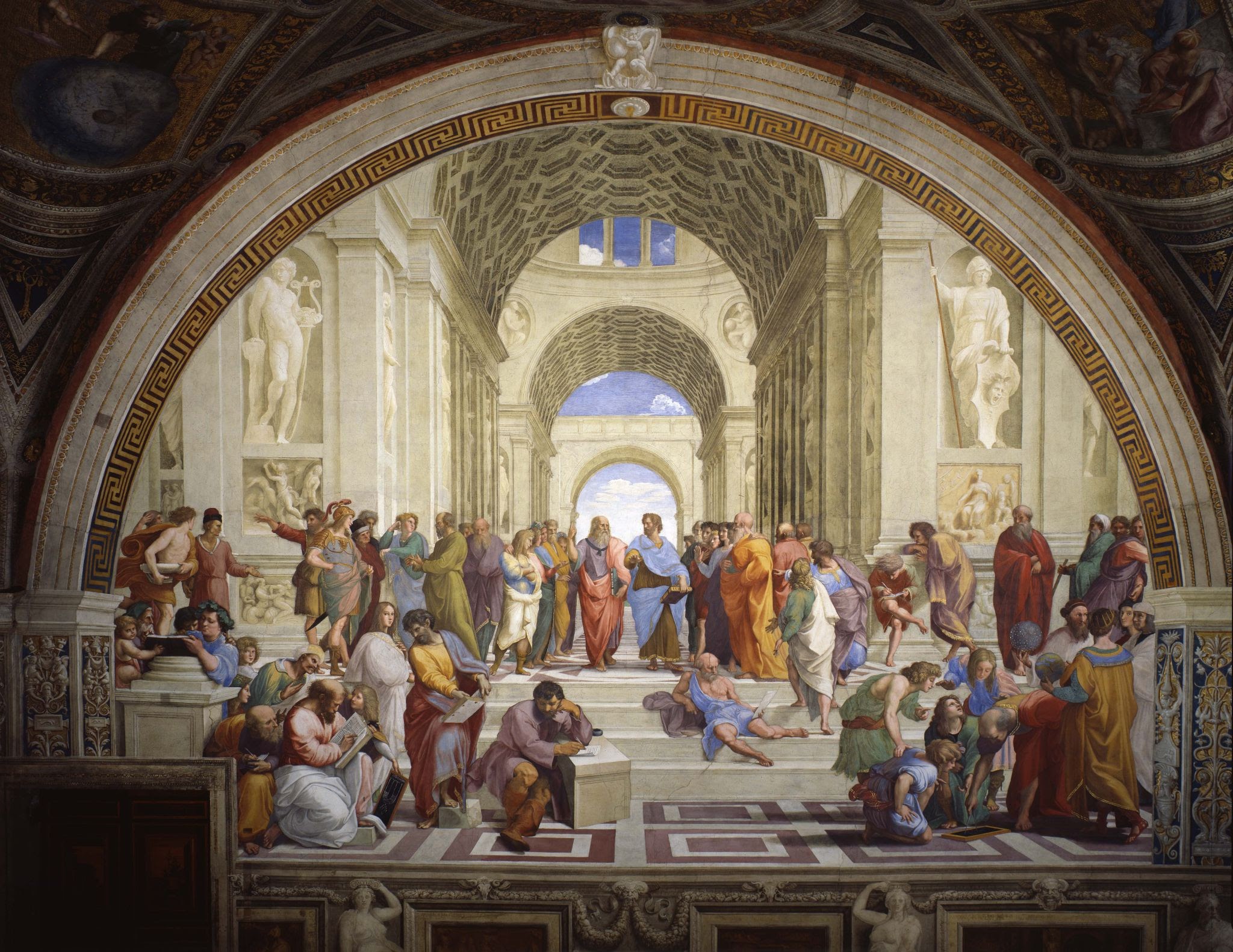
Commissioned by Pope Julius II (della Rovere) in the Vatican Palace (stanze) right next to Sistine Chapel
Raphael’s School of Athens: Allegory of Philosophy; ancient Roman Basilica + ancient Greek philosophers; Plato + Aristotle; Raphael’s self-portrait behind Ptolemy and Zoroaster; Michelangelo’s portrait in Heraclitus (added last minute)
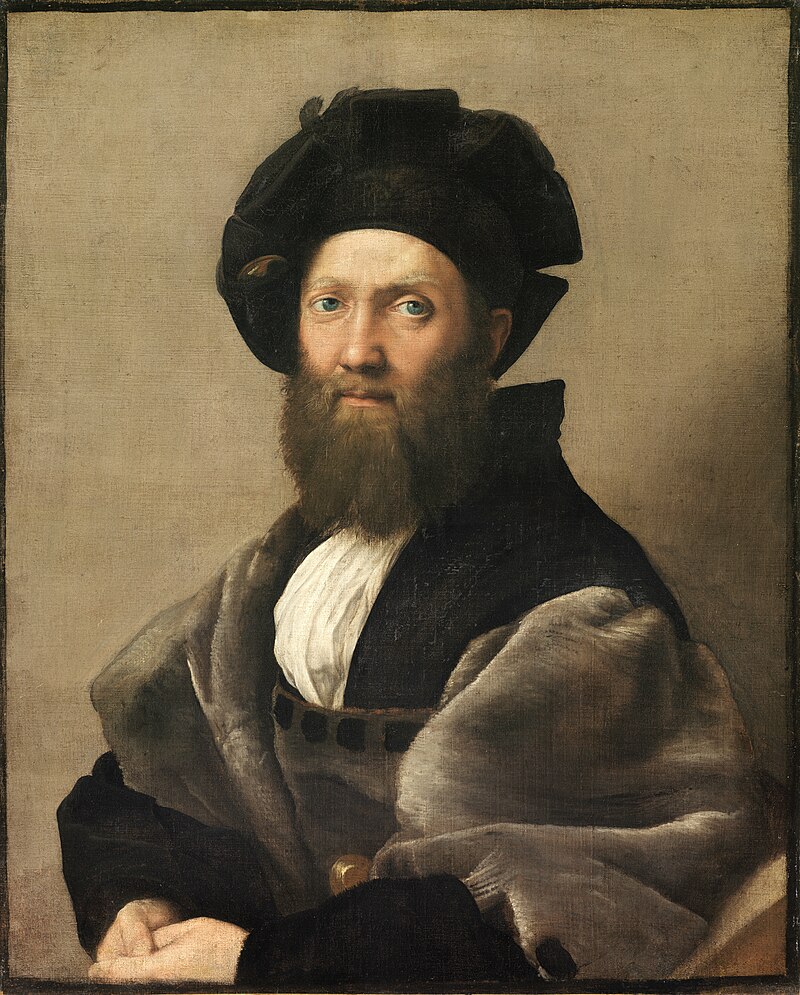
Commissioned by Raphael’s friend who published “The Book Courtier“
Raphael’s Portrait of Baldassare Castiglione; sprezzatura; subtle figura serpentinata

Public ally commissioned colossus statue/sculpture, originally placed on the rooftop of Florence Cathedral
Michelangelo’s David; terribilità 17ft tall
Vitruvius
Known for his multi-volume book De Architectura; the idea that all buildings should have three attributes: firmitas, utilitas, venustas (strength, utility, beauty)

Fresco, part of Sistine Chapel’s Ceiling commissioned by Pope Julius II (della Rovere family = coat of arms includes acorns)
Michelangelo’s Libyan Sibyl; unbelievable figura serpentinata; foreshortened toe
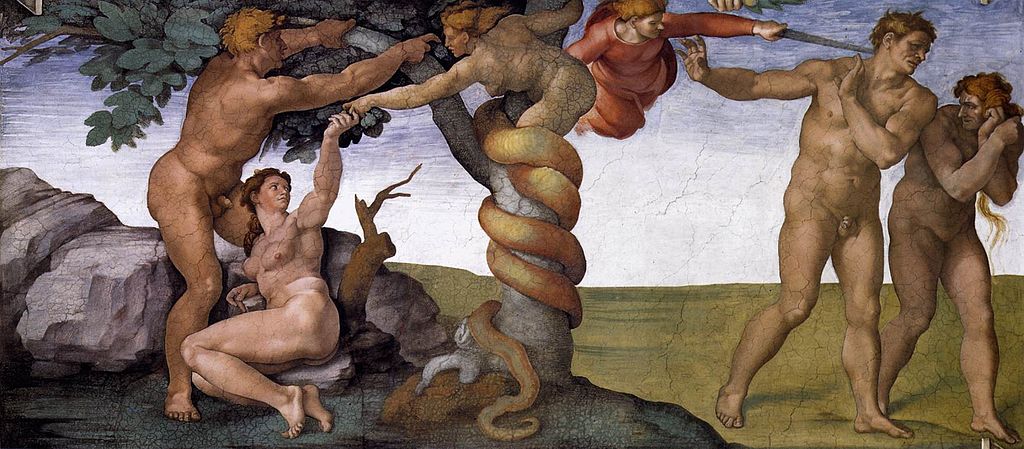
Fresco, part of Sistine Chapel’s Ceiling commissioned by Pope Julius II (della Rovere family = coat of arms includes acorns)
Michelangelo’s Temptation and Expulsion from the Garden of Eden; figura serpentinata
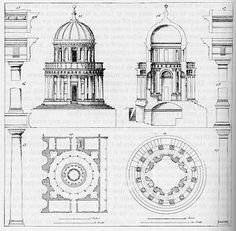
Commemorative tomb in Rome commissioned by Ferdinand and Isabella of Spain
Bramante’s Tempietto
“Process > Product“
Leonardo Da Vinci
“The Virtue of Difficulty“
Michelangelo
“The Triumph of Emulation“
Raphael
Terribilità
Quality of artwork that strikes amazement/fear/awe (aka awesomeness)
Nepotism
Promoting relatives/friends in career; in this case, making art for them (ex. Sistine Chapel, aka chapel of Pope Sixtus, Pope Julius II’s uncle)
Colossus
A statue/sculpture that is over life-sized